Shaq enters the Hall: Decades of dominance on and off court

Way back in 1994, Shaquille O’Neal, who will be inducted into the Naismith Basketball Hall of Fame on Friday, was asked about Knicks center Patrick Ewing.
“He’s still a great player, even at 31,” O’Neal said, according to a Sports Illustrated story. “I know for a fact that I won’t be playing at 31.”
For O’Neal, who was then just 21 and in his second season with the Magic, a decade surely felt like a century. The 1992 No. 1 overall pick was already one of the world’s most popular athletes and handsomely-paid celebrity endorsers. The supersized center was also well on his way to multi-platform fame, thanks to a platinum Shaq Diesel rap record and an upcoming Blue Chips big screen debut. As O’Neal openly shared his vision of going head-to-head with Arnold Schwarzenegger in a blockbuster movie, his hardwood battles with Ewing, Hakeem Olajuwon and David Robinson might have seemed like a temporary means to an end, or an opening act before O’Neal moved on to his next phase of world domination.
As it turned out, of course, O’Neal played well past the age of 31, and he might have made it to 41 if not for a laundry list of nagging injuries. He had played so long, defying his own prediction and the skepticism of many critics who long held that he wasn’t sufficiently committed to the sport, that he had quite literally spanned generations: When O’Neal finally retired in 2011, at the age of 39, Ewing’s son, Patrick Jr., was a 26-year-old center for the Hornets.
• Shaquille O’Neal ranked 15th among SI’s top 50 greatest NBA players of all-time
Over 19 seasons, O’Neal won four championships, claimed three Finals MVP awards, earned 15 All-Star selections and played for six franchises, all without ever stepping away from the game for a mid-career “retirement.” For more than two decades straight, dating back to his All-American days at LSU, O’Neal towered over the game in a transformational fashion: Rival players took to fouling him maliciously and flopping in an effort to slow him down, rival coaches fouled him intentionally if double- and triple-teaming him didn’t work, rival executives sought out 7-footers in hopes of countering him come playoff time and rival franchises chased his services with lucrative free agency offers and enticing trade packages.
When he finally stepped away from the game, O’Neal famously dubbed himself the “Most Dominant Ever,” and indeed his combination of size, strength, mobility and skills was and remains without comparison. But O’Neal’s staying power is almost as remarkable: He took the NBA’s reins when Michael Jordan decided to play baseball and didn’t step away until a year after “The Decision”; he teamed with (deep breath) Anfernee Hardaway, Kobe Bryant, Dwyane Wade, Steve Nash, LeBron James, Kevin Garnett and Paul Pierce; he battled Jordan’s Bulls, Olajuwon’s Rockets, Ewing’s Knicks, Robinson’s Spurs, then Duncan’s Spurs, Allen Iverson’s Sixers, Jason Kidd’s Nets, Reggie Miller’s Pacers and Dirk Nowitzki’s Mavericks; and held on long enough to rank seventh all-time in points, 14th in rebounds and eighth in blocks despite missing significant portions of his prime years due to injuries. After buying his early music on cassettes and his movies on VHS tapes, O’Neal’s longtime fans were first informed of his retirement announcement on Tout, a “real-time mobile video publishing platform.”
Shaq on Colin Kaepernick sitting during national anthem: 'I would never do that'
The key to O’Neal’s longevity and, in turn, the defining characteristic of his legacy is that he never listened to those who suggested he needed to choose. Indeed, from the very beginning, O’Neal relished in living large and having it all, pursuing his many non-basketball interests regardless of the flak he might receive along the way.
With that in mind, here’s a look back at O’Neal’s storied career, as told in the pages of Sports Illustrated over the past 25 years. From the very beginning, it was clear O’Neal was a monster on the court and a thoroughly original personality off of it. What’s striking, by the end of this trip back through memory lane, is how little O’Neal’s core personality traits seem to have changed and how far ahead of his time he was. Although O’Neal once reached back in history to dub himself “The Big Aristotle,” his insatiable desire to expand past the traditional boundaries of a professional athlete made him far more futuristic than ancient, a digital pioneer in an analog landscape that struggled to process his earthshaking presence.
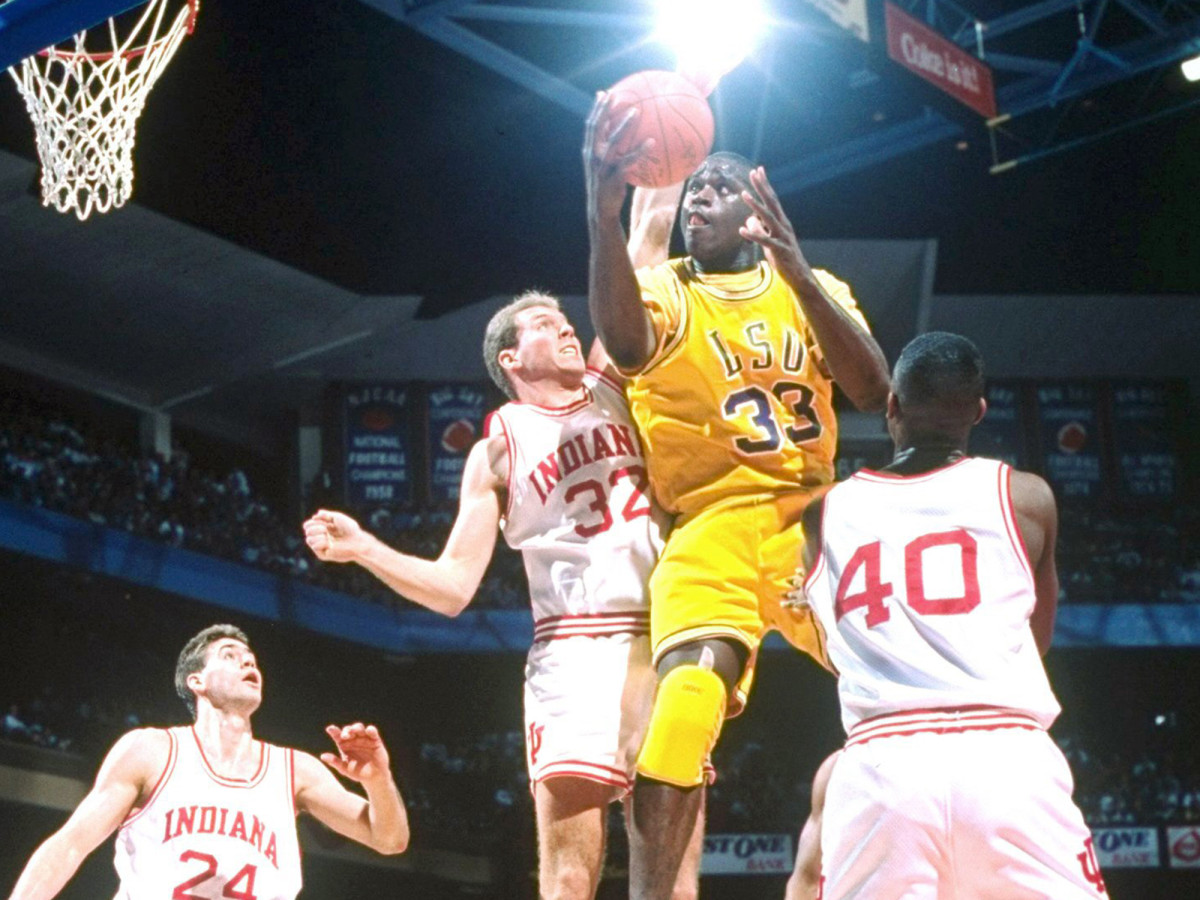
1991
From the very beginning, O’Neal inspired both awe and fear. Curry Kirkpatrick’s 1991 cover story profile of O’Neal—“Shack Attack”—touches on both themes while labeling its subject “basketball’s future.”
Take, for example, LSU coach Dale Brown’s first meeting with his star.
Long before O’Neal, who was born in Newark, N.J., went to high school for two seasons in Texas, he was already prominent on LSU coach Dale Brown’s wish list. Five years ago, during a European tour of coaching clinics, Brown came across the then 6' 6" Shaquille at an Army base in Wildflecken, West Germany, where his father was then stationed.
“What rank are you, soldier?” Brown asked.
“No rank. I’m 13 years old,” O’Neal answered.
“Uh, your dad around?” asked Brown.
By the time Brown was able to get O’Neal in a basketball uniform, destruction seemed inevitable and legends like Kareem Abdul-Jabbar were already paying their respects.
Three times this season the 7' 1", 295-pound O’Neal has come a breath away from his ultimate goal of ripping a basketball goal asunder. It’s not just shattering the glass backboard that he has in mind—that’s child’s play, although he hasn’t actually broken one yet. We’re talking bringing down the whole works—the net, the rim, the backboard, the basket stanchion—everything! He almost did it in mid-November in an exhibition game against the Newcastle (Australia) Falcons. On that occasion everyone in LSU’s Maravich Assembly Center gave thanks that, after O’Neal’s two-handed dunk not only moved the base of the basket support a good five inches but also broke the chain anchoring it to the floor, he wisely let go of the rim so the entire structure wouldn't topple over. “The night I get one, you’ll really see some dancin’,” O’Neal says.
• Shaq weighs in on Kaepernick's protest: I would never do that
...
“Don’t call Shaquille the next anybody,” warned Abdul-Jabbar, who later that night taught O’Neal the basics of the sky hook, which he has yet to master. “Let him be the first Shaquille.”
As O’Neal rampaged through the SEC, opponents struggled to devise ways to stop him, prompting Franz Lidz to painstakingly catalogue their many strategies. Along the way, Lidz encountered plenty of apprehension.
“What fascinates me is how people behave,” says 6' 9", 220-pound Warren Kidd, one of the best players in the Ohio Valley Conference. “And how the mind works.” Still, he hasn’t yet decided how he’ll psych out O’Neal. “Talking trash won’t upset him,” he allows. “You’ve got to straight up face him.”
Kidd’s face job won’t necessarily be face-to-face. “I’ll play Shaq with my back to him,” he says. “Maybe that’ll mess him up.”
A little reverse psychology.
The Southeastern Louisiana Lions may ambush O’Neal. “I’m sending my four biggest men after him,” says coach Don Wilson, sounding like Mao. “They’re my Gang of Four.”
Last season O’Neal left Southeastern Louisiana in ruin. The damage included 28 points, 15 rebounds, six rejections, a 117–68 drubbing. Blame poor intelligence reports: Some Lions had anticipated a Buddha-like figure. “I thought Shaq would be fat,” says 6' 9" Darryl (Ice) Jones, Southeastern Louisiana’s starting center. “But he’s got no fat, none whatsoever. He’s just seven feet of muscle, a muscle monster.”
“King Kong,” says Marvin Pierre.
“Godzilla,” says Keith Dudley.
They are two other members of the Gang of Four, both 6' 8" forwards.
“He’s a seven-one, 300-pound Mike Tyson,” says 6' 6" Pete Meriweather.
As terrified as his opponents already sounded by his imposing presence, O’Neal painted a much softer portrait of himself in Kirkpatrick’s piece.
“I don’t ever want to grow up,” he says. “I guess I’m like Peter Pan. Grown-ups have problems. I want to stay happy.”
That duality—fearsome player, soft-hearted person—endured throughout O’Neal’s career. Here was the so-called “Man-child” in his infancy.
1992
After three seasons at LSU, O’Neal took the NBA by storm. Right out of the gate O’Neal averaged 23.4 PPG, 13.9 RPG and 3.5 BPG, earning All-Star and Rookie of the Year honors. Jack McCallum’s 1992 profile—“Prince of the City”—is a reminder of O’Neal’s immense and immediate fame.
Shaquille O’Neal stepped out of a stretch limousine, while taking care that his full-length, custom-tailored black leather coat (with a Superman logo on the back) did not touch the wet sidewalk, and began strolling through Times Square.
…
On the streets, O’Neal’s appeal is evident. He’s a walking photo op. He smiles, he touches, he tugs people into pictures with him. He has a natural warmth that can be compared with that of Magic Johnson and Michael Jordan; and his is a charm that certainly is not ascribed to other men his size. San Antonio’s David Robinson is ill at ease in crowds, and Ewing, like Bill Russell and Kareem Abdul-Jabbar before him, simply hates them. O’Neal is no doubt due an attack of cynicism sometime soon, but for now he is the archetypal gentle giant, smiling while he stoops to pick a daisy. He has a large reservoir of nice in that big body.
“He’s a combination of the Terminator and Bambi,” says Armato. “That’s very rare.”
You can say that again. It’s anyone's guess whether O’Neal will surpass Jordan with Madison Avenue. (He will soon show his rapping talents in a video with—who else?—Fu-Schnickens.) But O’Neal’s 1992 endorsement income is a long way from the approximately $36 million that Jordan now commands. Still, O’Neal is arriving at the perfect time. With Magic and Larry Bird gone, and Jordan and Charles Barkley aging, the league clearly needs a new transcendent star; Shaq is it.
One year later, when Jordan exited stage left for a second career with the Birmingham Barons, McCallum again appointed O’Neal as the recipient of the torch.
Jordan’s greatest achievement was that, game after game, season after season, he was actually better than his hype. Shaquille O’Neal is about to find out how hard it is to pull that off.
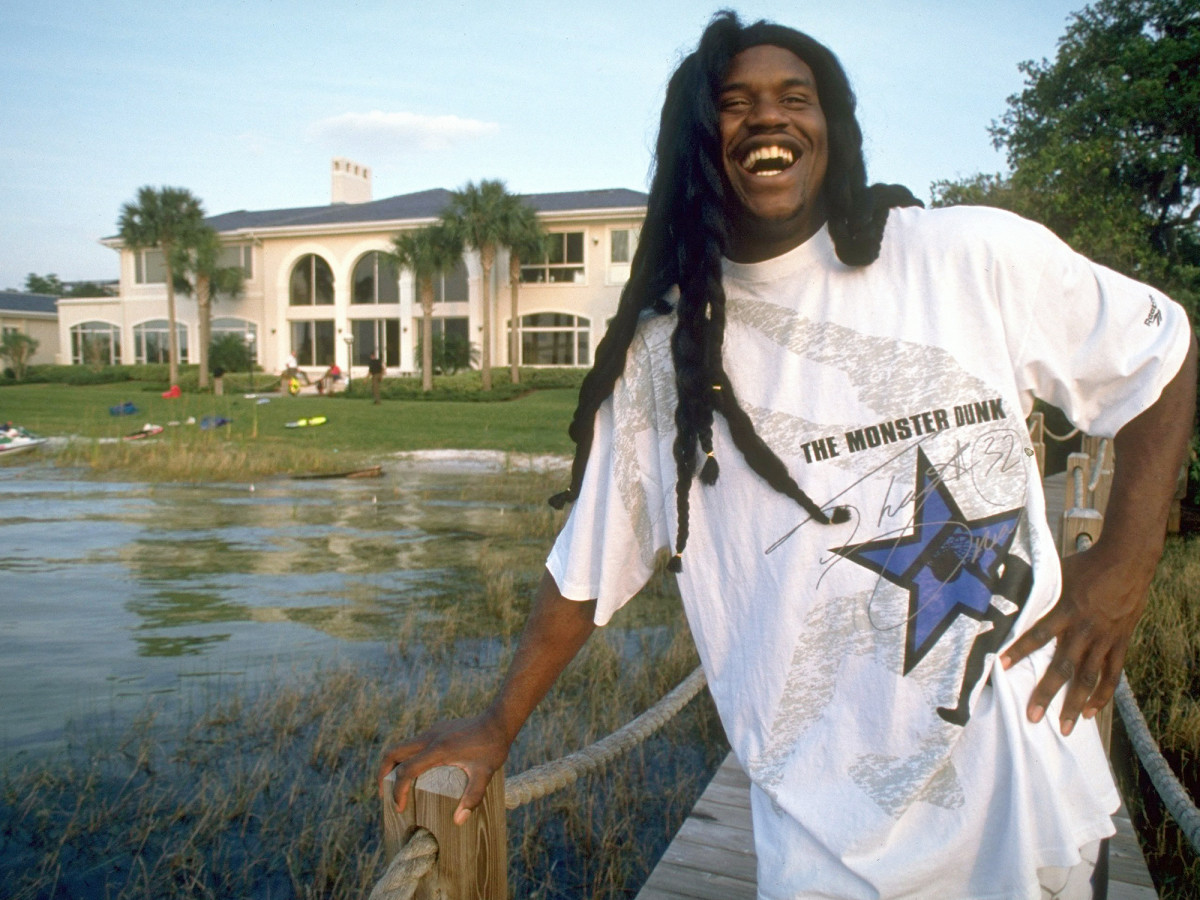
1994
O’Neal wasted little time embarking on his superstar trajectory, guiding the Magic to the 1994 playoffs in his second season and to the 1995 Finals in his third. As John Ed Bradley’s 1994 story—“Sugar Shaq”—made clear, O’Neal was unstoppable off the court too.
It is a mighty fine place to sleep, this house. Or to do most anything else, for that matter. Neoclassical in design, it bellies up to a cul-de-sac in the back acres of an exclusive residential area called Isleworth. To reach it you pass two gatehouses with uniformed guards who love nothing more than to say, “Beg your pardon, sir. But was Mr. Shaquille expecting you?” O’Neal’s house has a pool, a pool house, a music studio, eight or nine bathrooms (O’Neal says he has never actually counted), garages on either end and a tennis court that is being converted into a basketball court. Inside the house there are 23,000 square feet of living area, which makes the place about as cozy as an airline terminal. In the den statues of Mandingo warriors stand on green marble pedestals, and leather furniture crowds a slick granite floor dressed with Oriental rugs. The game room, off the kitchen, holds assorted portraits of the man-child himself, all of them hung at the eye level of a 7-footer. It also holds a giant soft-drink machine and a number of arcade video games, none of which requires change.
O’Neal shares the house with his publicist and personal assistant, Dennis Tracey, a former teammate at LSU. Tracey helps bring order to the riot of activity that swirls around O’Neal. They moved here from another Isleworth mansion around Thanksgiving, but already O’Neal has set his sights on a 50,000-square-foot palace just around the bend in the lake. “Big people,” he says, “need a lot of space, bro.”
…
Last summer O’Neal also made two brief tours abroad, both of them sponsored by Reebok. In August he went to Japan, Singapore and Australia, and in September he visited Spain, Italy and France. Both trips were publicity junkets designed to win him international exposure and to tighten his link with the Boston-based shoe company, which has guaranteed to pay him between $12 million and $15 million over five years. O’Neal was mobbed almost everywhere he went. One day at a shopping mall in Tokyo he put on a basketball demonstration for a crowd of about 15,000, some of whom stormed the stage after he was finished. O’Neal had a couple of American bodyguards to protect him, but “the place still had to bring riot police in,” recalls Tom Carmody, a Reebok executive who helped organize the event. “I thought Shaquille was going to get crushed—it was very scary. He has this rock-star persona, and he was treated like one. He just did everything right over there, and he did it instinctively—from holding up a little kid for the cameras to bending the rim on his first dunk.”
Those days abroad generally began at 7 a.m., when O’Neal and his entourage went to a gym and worked out. O’Neal spent an hour stretching and exercising with his personal trainer, a former kick-boxing champion. Then he devoted an hour to basketball. Just an hour, though, since there was so much else to do.
“After his workout he’d go through a whole business day, with interviews and clinics and autograph signings and retail business and dinners, and then he’d do a rap concert at night,” says Robert Hamilton, a former high school basketball coach who now works for Reebok. “Sometimes after these concerts he was so exhausted he couldn’t do anything but sit there.”
While in Japan, O’Neal had dinner with a sumo wrestler who gave him a ninja uniform, a mask and a gold samurai sword, which customs officials at the airport refused to let him take on the plane.
Meanwhile, back on the court, Phil Taylor writes in a 1994 piece—“Great Leap Upward” that O’Neal’s tandem with point guard Anfernee “Penny” Hardaway had many people envisioning a Magic dynasty.
There is such a high-tech, futuristic quality to the Orlando Magic that if the team didn’t exist, some science-fiction writer would surely invent it. Perhaps the aura comes from Shaquille O’Neal, who, in case you can’t see him in person, is also available on compact disc, videocassette and CD-ROM. Or maybe it derives from Anfernee Hardaway, the prototype for the 21st-century player, so versatile that he renders conventional positions obsolete. The Magic shouldn’t be atop the Atlantic Division, it should be on exhibit at Orlando’s EPCOT Center.
…
In fact, Orlando has been so dominant that even the most hardened observers tend to gush with praise. When Hall of Fame center Bill Russell, whose Boston Celtics won eight straight NBA championships and 11 in 13 years between 1956 and ’69, was a guest on Magic general manager Pat Williams’s radio show recently, he told Williams he never thought any team would approach the Celtics’ success. “But after watching your team on TV,” Russell said, “I’m not so sure.”
…
A kind of mythology has enveloped the 7' 1", 303-pound (a mere 4% of which is fat) Shaq, including the belief that he relies on raw talent alone and doesn’t work to broaden his skills because he’s more interested in being a celebrity than a champion. If that ever was the case, it certainly isn’t any longer. O’Neal has shown a variety of new moves around the basket this season, including jump hooks, turnaround jump shots and drop steps. He may not be ready to make an instructional video on low-post play yet, but he’s more than just a dunker, a tag his critics had hung on him.
“He took a lot of bashing over the last two years, and it was always unjustified,” says Hill. “People saw the movie [Blue Chips, in which O'Neal and Hardaway both appeared], the videos, the rap albums, and they just assumed that he wasn't doing anything else during the off-season. They never found out that he was spending a couple of hours on his game every day in the summer, because they never asked.”
Taylor adds that O’Neal, still in his early-20s, already has a firm idea of the unique burden he carries as a superstar.
There is something almost sad in the way O’Neal has hardened to the criticism that he believes he won’t ever totally escape. He feels he’s destined to be a giant who never quite satisfies everyone, no matter what he accomplishes, in much the way Wilt Chamberlain was before him. Even as he enjoys his brilliant early season, he waits for the critics to begin taking their shots. “It’s early,” he says. “It’ll come. It always comes. They’ll say, ‘He can dunk, but he can’t shoot jumpers. He can dunk, but he doesn’t have the jump hook or the baseline fadeaway.’” But he is developing those shots, isn’t he? “I have ’em,” he says. “I have everything.”
He doesn’t have a championship, but he doesn’t think even that will silence the critics. “Getting a ring won’t change it,” he says. “Winning MVP won’t change it. The same thing happened to Michael Jordan. First they said he couldn’t win a championship. Then they said he couldn’t win back-to-back. Then it was, ‘O.K., but can he win three in a row?’ It’s going to be like that for me as long as I’m in the league.”
Indeed, O’Neal’s words feel prophetic. When he retired, some critics still wondered whether he had lived up to his full potential despite his many accolades.
1996
Orlando’s dynasty ended before it even launched. After losing to the Rockets in the 1995 Finals, the Magic were swept by Jordan’s Bulls in the 1996 East finals. To make matters worse, O’Neal was eligible for free agency after spending just three seasons in Florida.
Taylor set the stage after Orlando’s playoff elimination.
O’Neal, in particular, may be especially hard-nosed in negotiations because of the Los Angeles Lakers’ interest in him. The Lakers will not be able to match the monetary offer the Magic can make to O’Neal (who earned $5.7 million this season), because Orlando is not bound by the salary cap in re-signing its own free agent. Conversely, Orlando will not be able to match the obvious benefits that L.A. would provide for Shaq’s burgeoning careers as an actor and as a rapper. O’Neal’s only public comments have indicated a desire to stay with the Magic, and many of those close to him believe he is leaning toward re-signing with Orlando.
Then, a few weeks later, Jackie MacMullan hinted that O’Neal might no longer be favoring the home team.
Shockingly, some Orlando fans are ready to wish the big fella good riddance. The city is still smarting from the Bulls’ humiliating four-game sweep of the Magic in the Eastern Conference finals, and the finger has been pointed squarely at Shaq and his errant free throw shooting (36.4%) during the series.
On June 2, a week after Chicago’s triumph, The Orlando Sentinel published the results of a survey conducted in Magic country by America’s Research Group. It asked whether the Magic should fire coach Brian Hill if that were one of O’Neal’s conditions for returning. An overwhelming 82% answered no. The survey also inquired if O’Neal was worth his current seven-year, $41 million contract. Only 49% answered yes.
Sources say the results rankled Shaq, who had been stung by earlier assertions in the Orlando media that he was not a good role model because he was having a child with his longtime girlfriend but did not announce immediate plans to marry. That lifestyle choice would barely register on the seismograph in Los Angeles, where O’Neal could blend in as another high-profile celebrity, albeit one who dunks and raps in addition to flashing his mug across the silver screen. (He’ll exhibit those last two skills as a rapping genie in Kazaam, scheduled for release on July 17.)
“Appealing?” [O’Neal’s agent Leonard] Armato asks aloud after pondering how O’Neal would find the L.A. scene. “Why wouldn’t it be?”
And that was that. Rather than re-sign in Orlando, O’Neal signed a seven-year, $120 million contract with the Lakers, who needed a follow-up act to the Magic Johnson/Abdul-Jabbar “Showtime” era. From Taylor:
Fifteen years ago Magic Johnson’s 25-year, $25 million contract was considered a whopper, but compared with the mountains of money that recently have been piled at the doors of some free agents, $25 million is a molehill. Last week center Shaquille O’Neal turned down a deal from the Orlando Magic that would have paid him $21 million in the contract’s first season.
Shaquille O'Neal on leaving Magic: 'I regret it sometimes'
…
“It’s not about the money,” O’Neal insisted last Thursday at the news conference announcing his move. But of course it is all about the money. With more than 150 free agents, including an unprecedented number of stars, on the market this summer, owners and team executives saw that they could dramatically remake their teams by spending a lot of money while cleverly maneuvering to stay under the salary cap of $24.3 million per club.
“Get used to it, because this is the way it’s going to be,” says Jerry West, the Lakers’ executive vice president of basketball operations. “The top players are going to be paid their worth. This is where we are.”
O’Neal went on to earn more than $292 million in salary during his NBA career.
Rare SI Photos of Shaq
Shaquille O'Neal
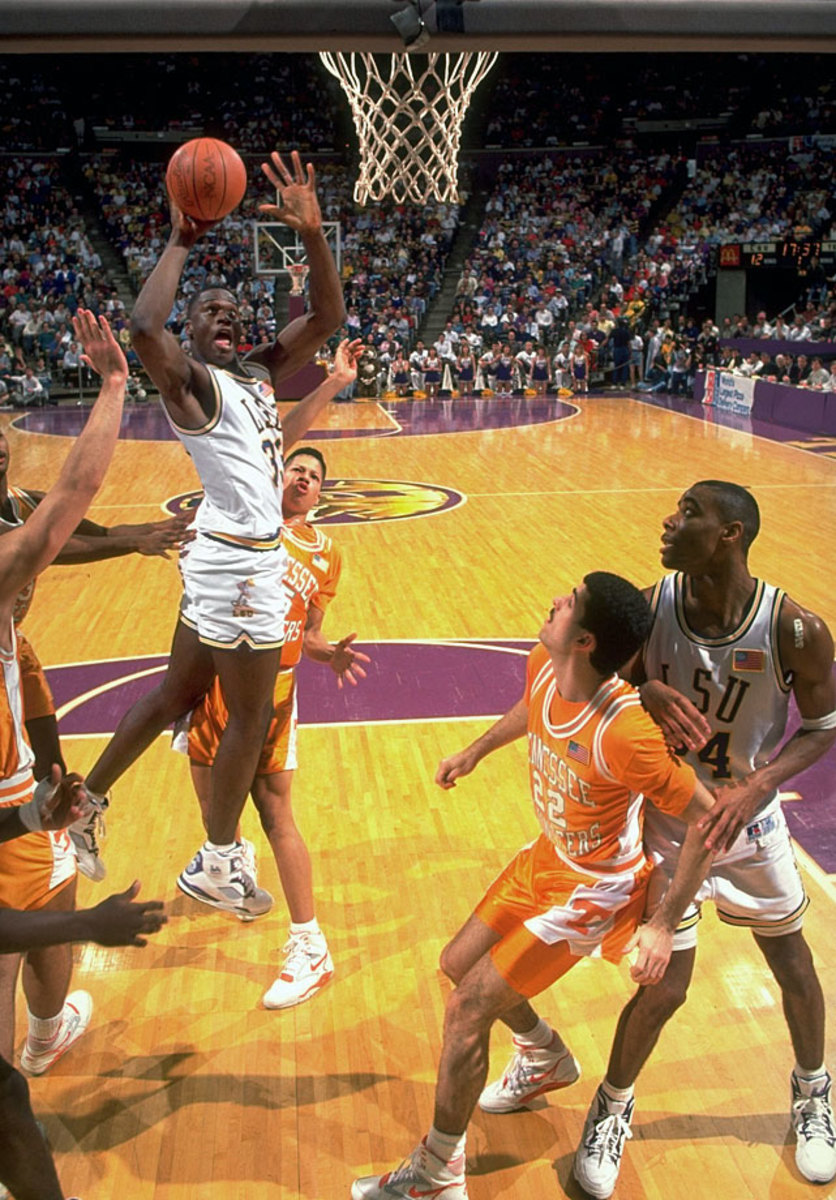
1991
Shaquille O'Neal
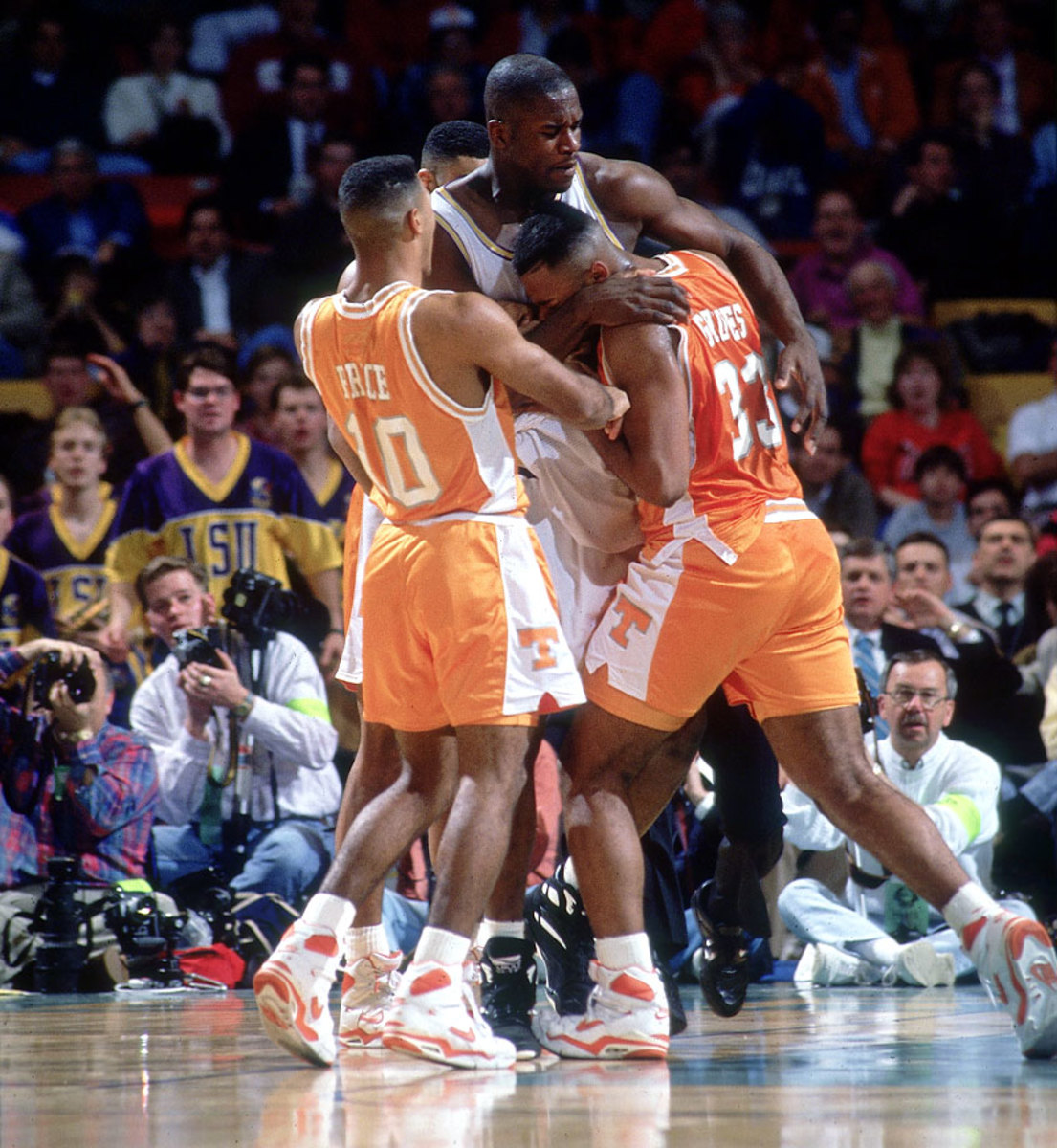
1992 SEC Tournament
Shaquille O'Neal
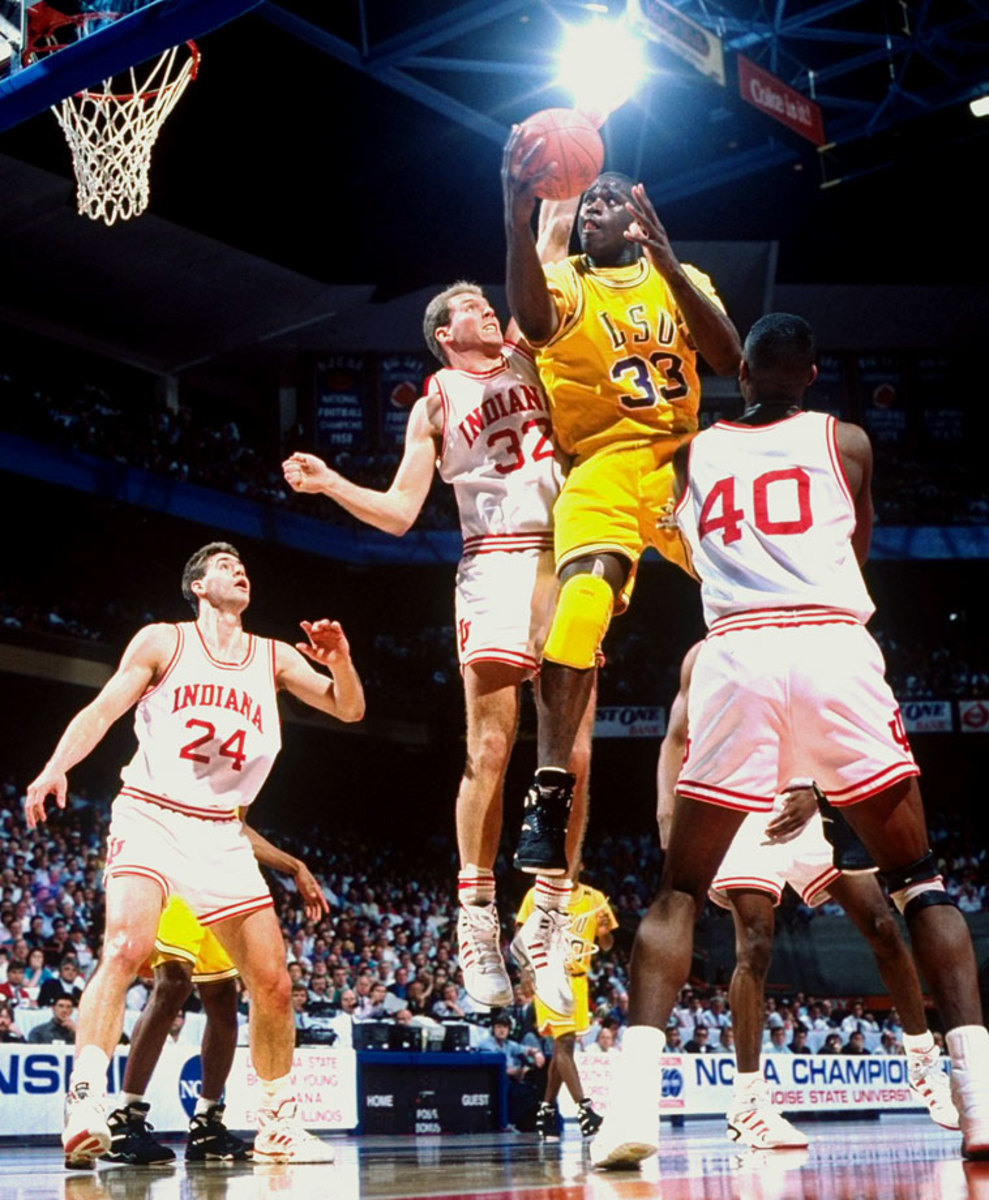
1992 NCAA Tournament
Shaquille O'Neal
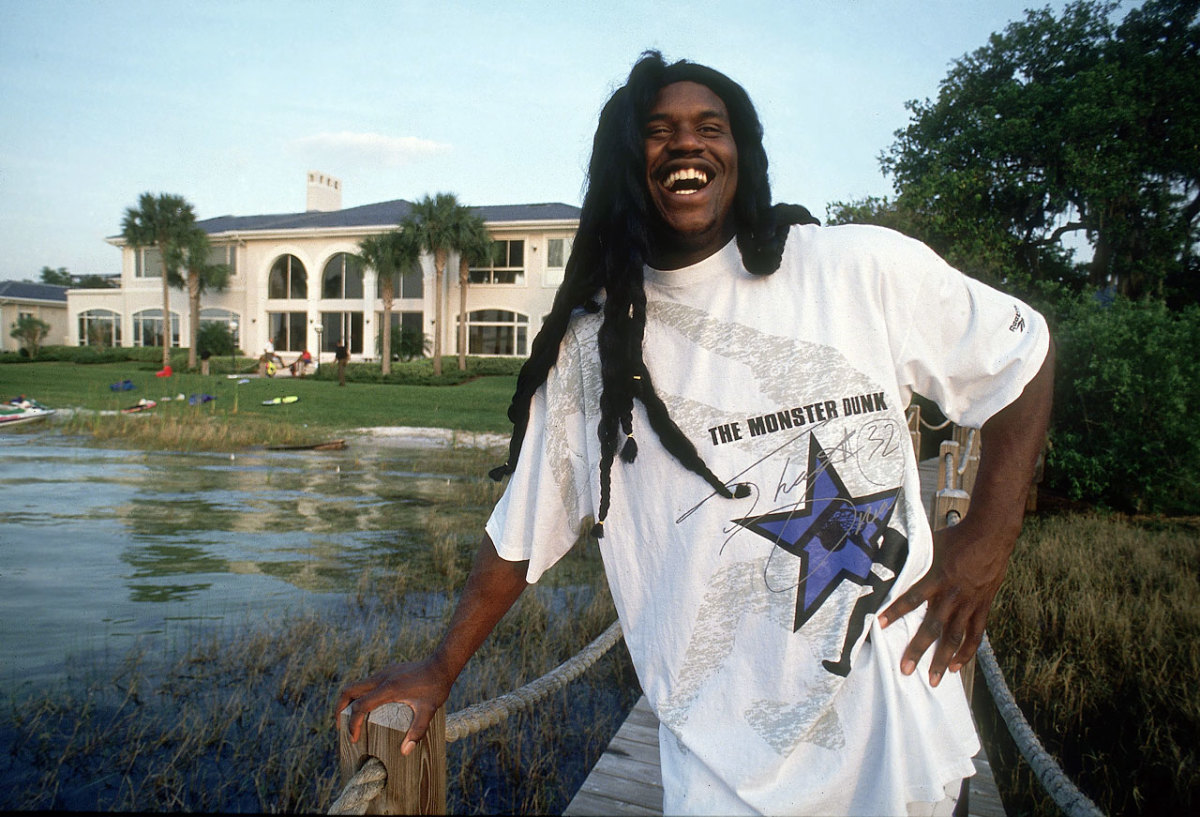
1994
Shaquille O'Neal
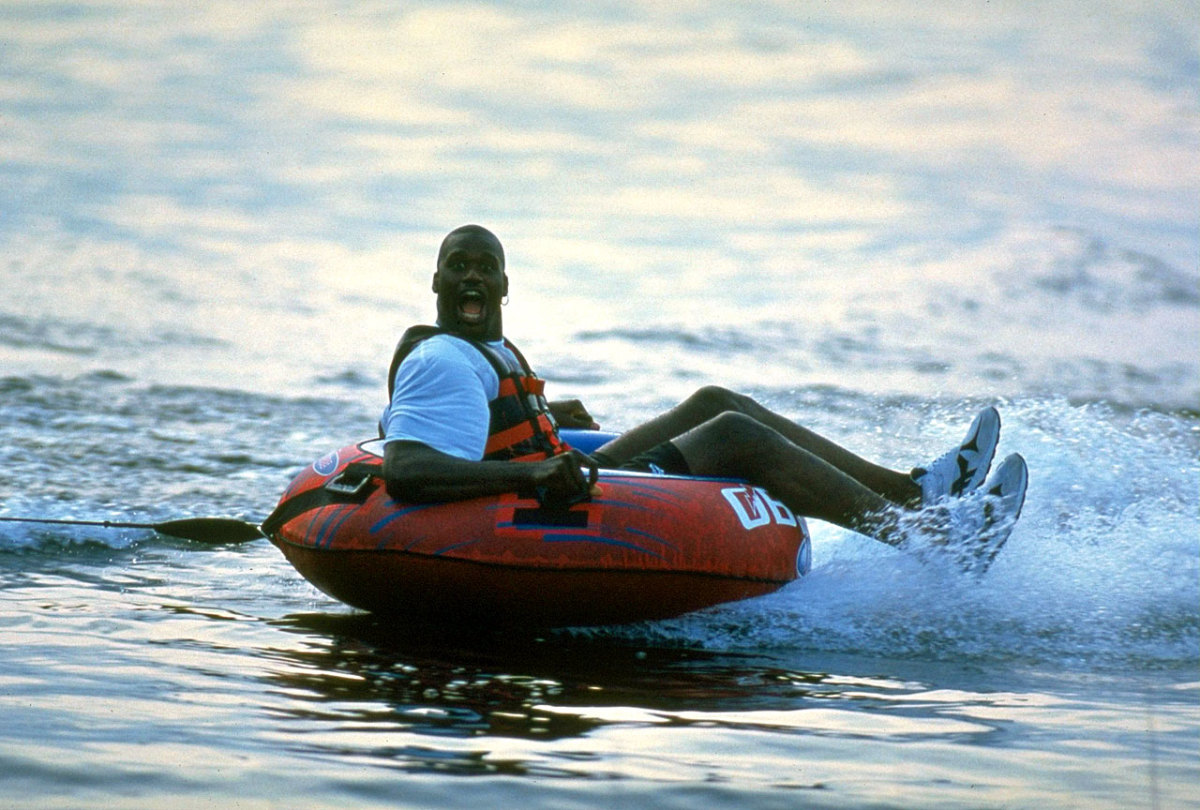
1994
Shaquille O'Neal
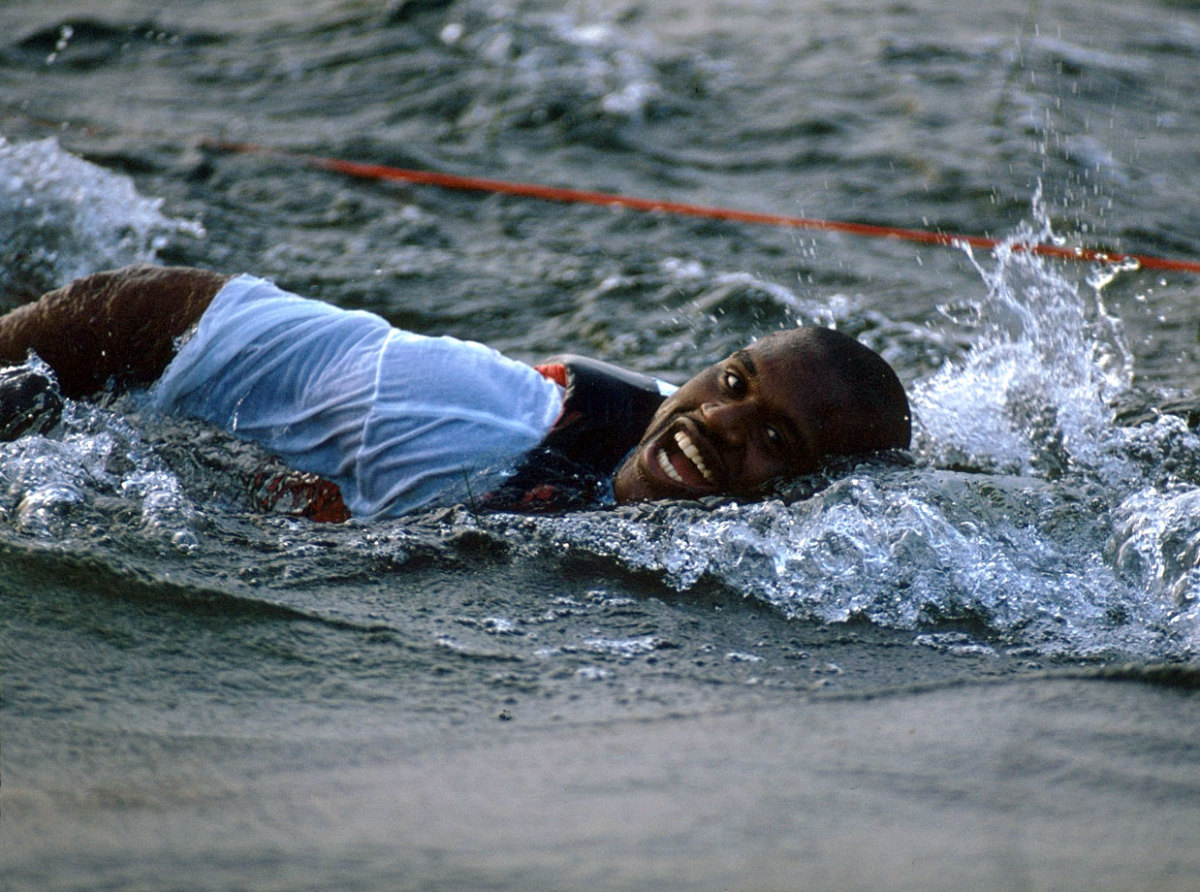
1994
Shaquille O'Neal and Charles Barkley
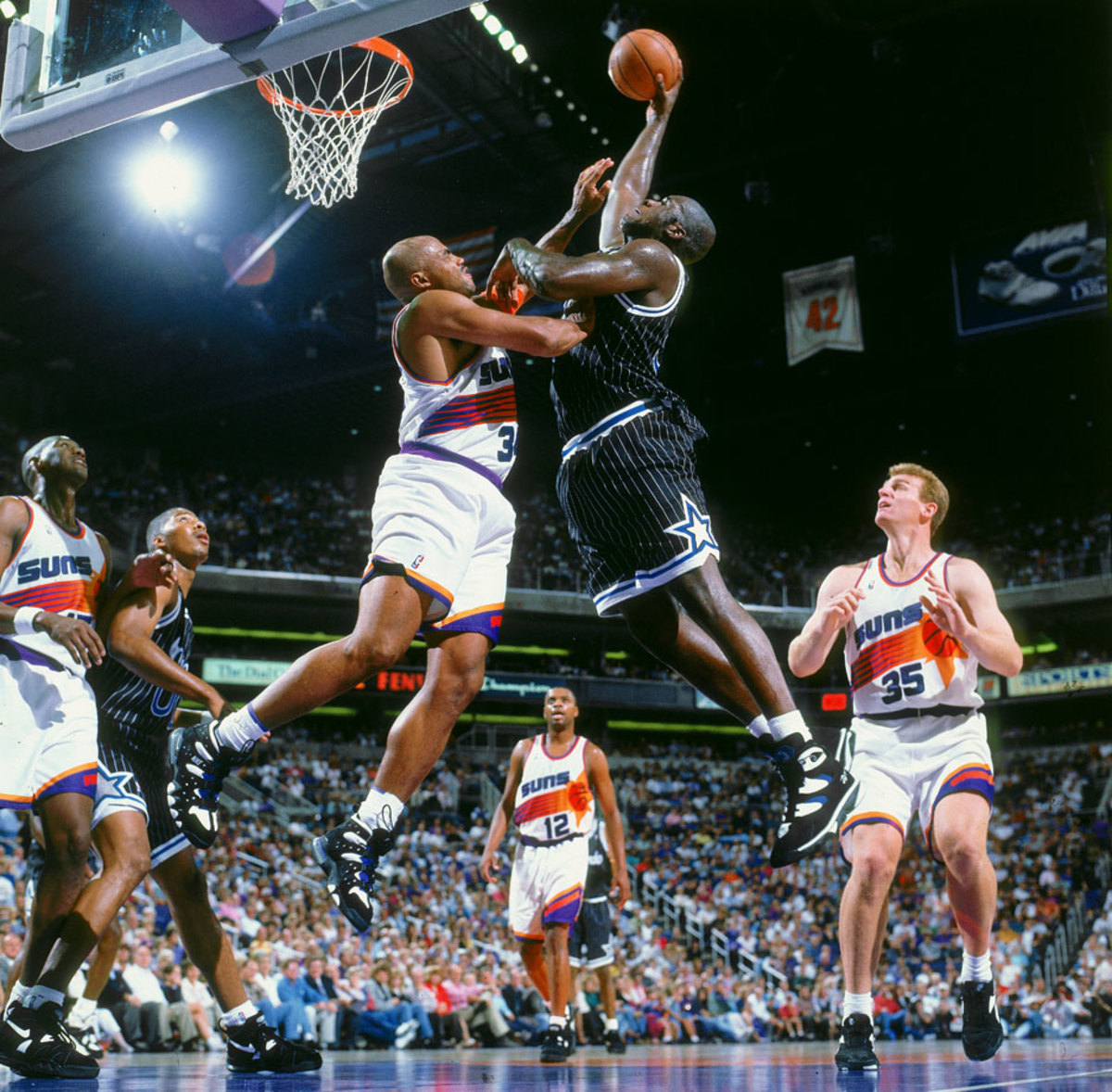
1994
Shaquille O'Neal and Patrick Ewing
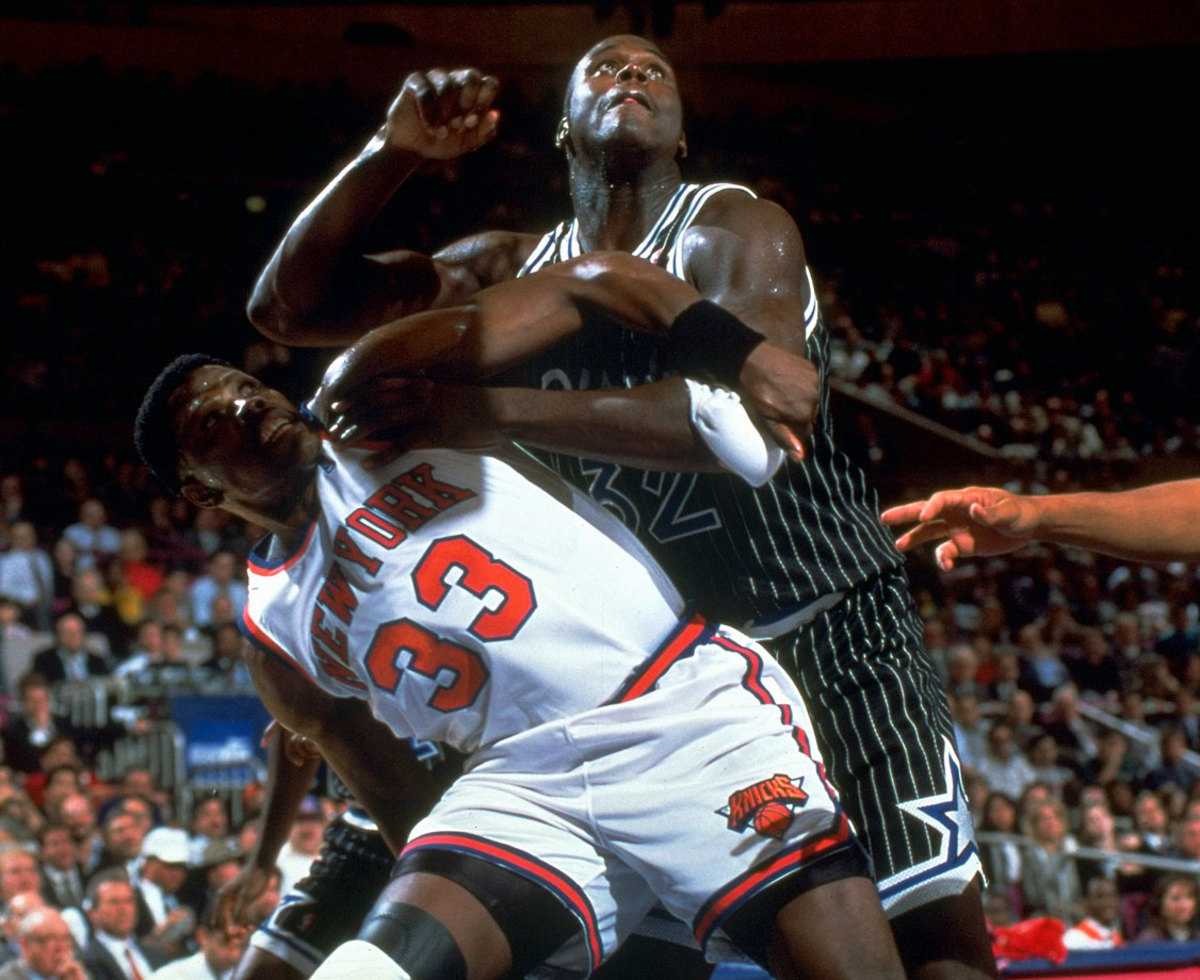
1994
Shaquille O'Neal

1995
Shaquille O'Neal and Michael Jordan
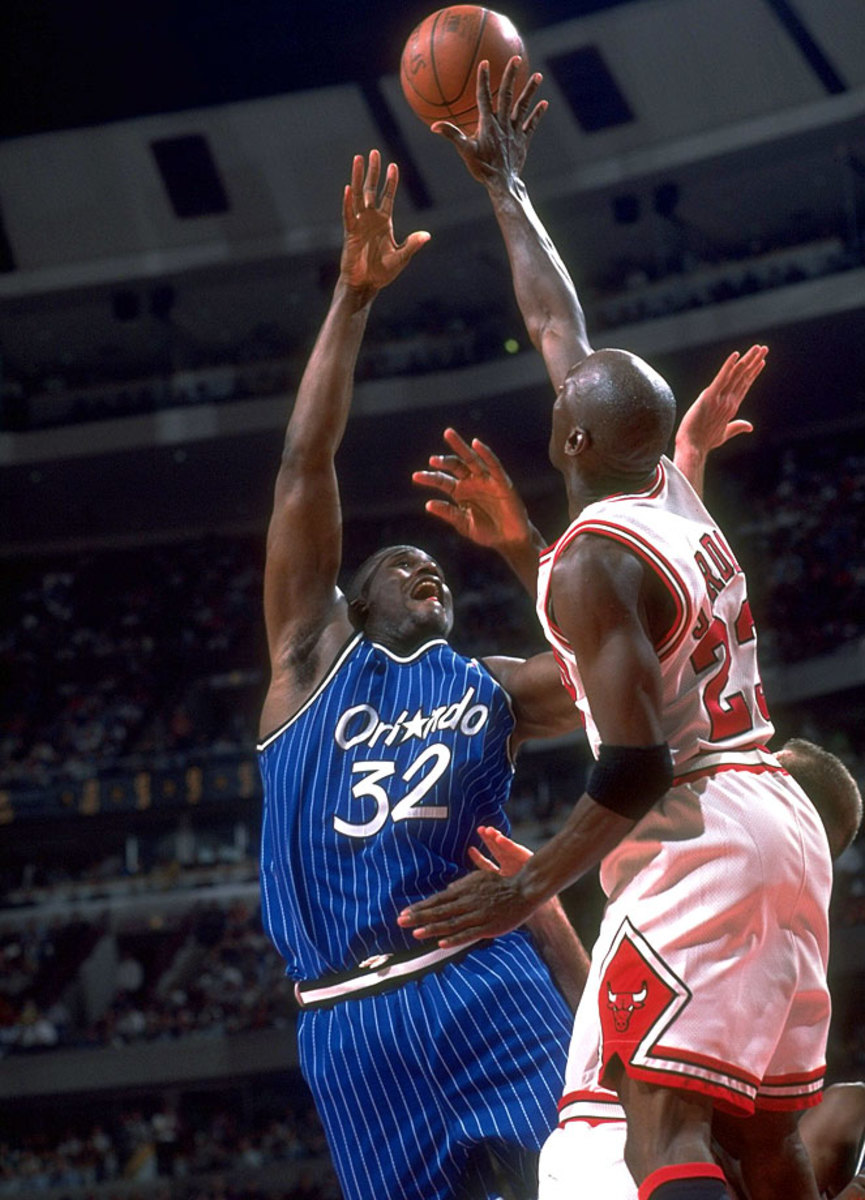
1995 NBA Eastern Conference Semifinals - Game 3
Shaquille O'Neal and Hakeem Olajuwon
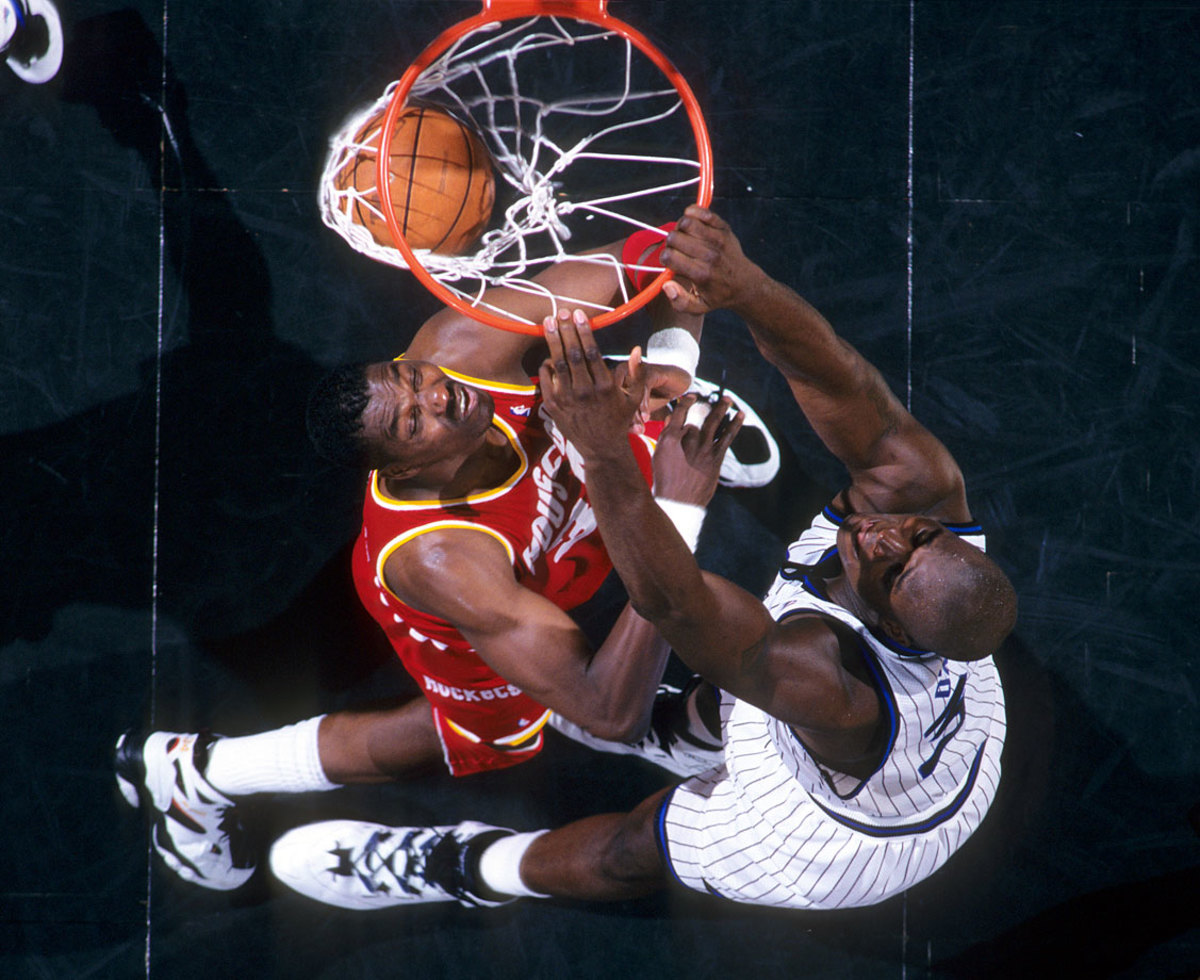
1995 NBA Finals - Game 2
Shaquille O'Neal and Michael Jordan
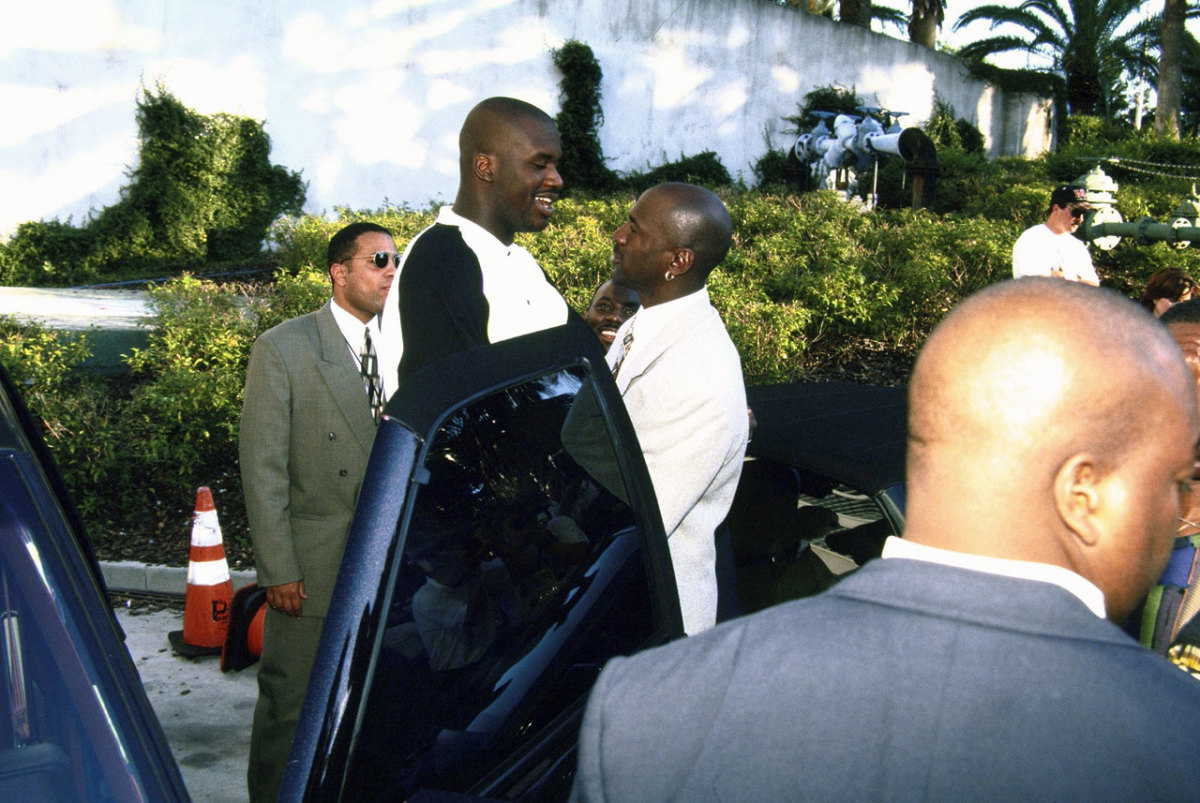
1996 NBA Eastern Conference Finals - Game 4
Shaquille O'Neal
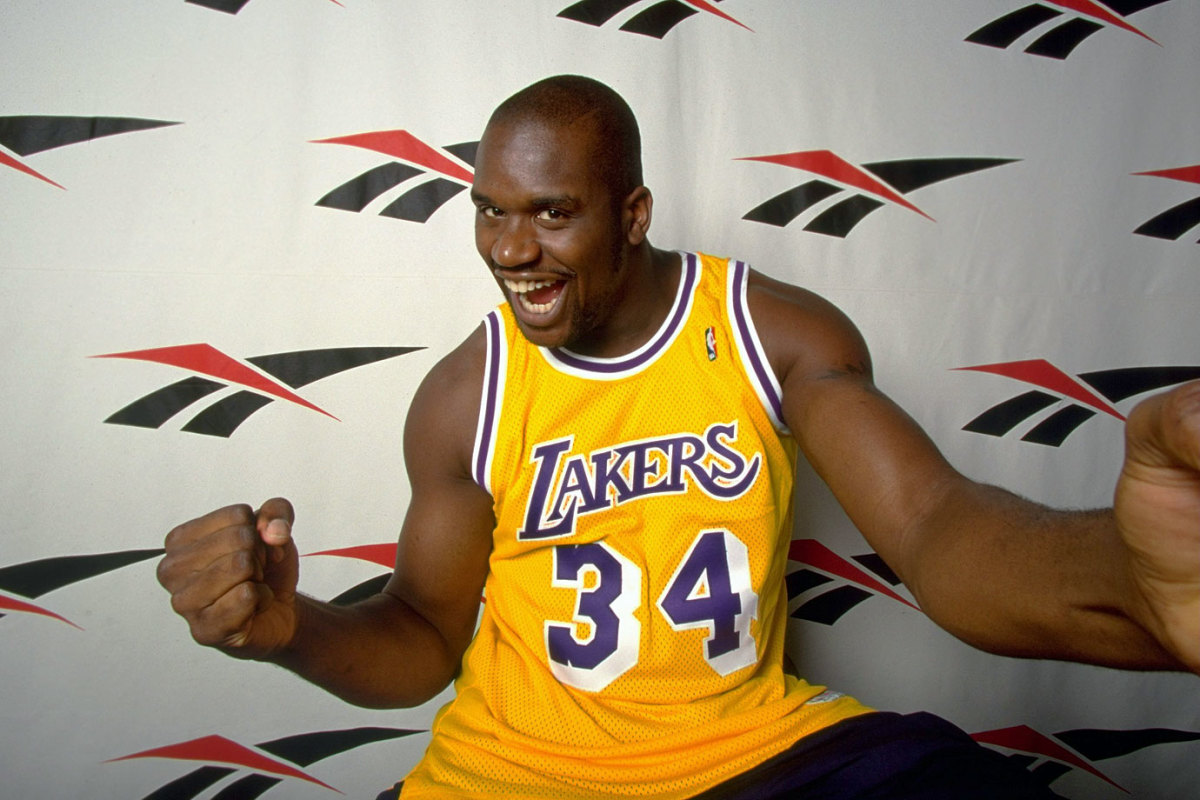
1996
Shaquille O'Neal, Kareem Abdul-Jabbar and George Mikan
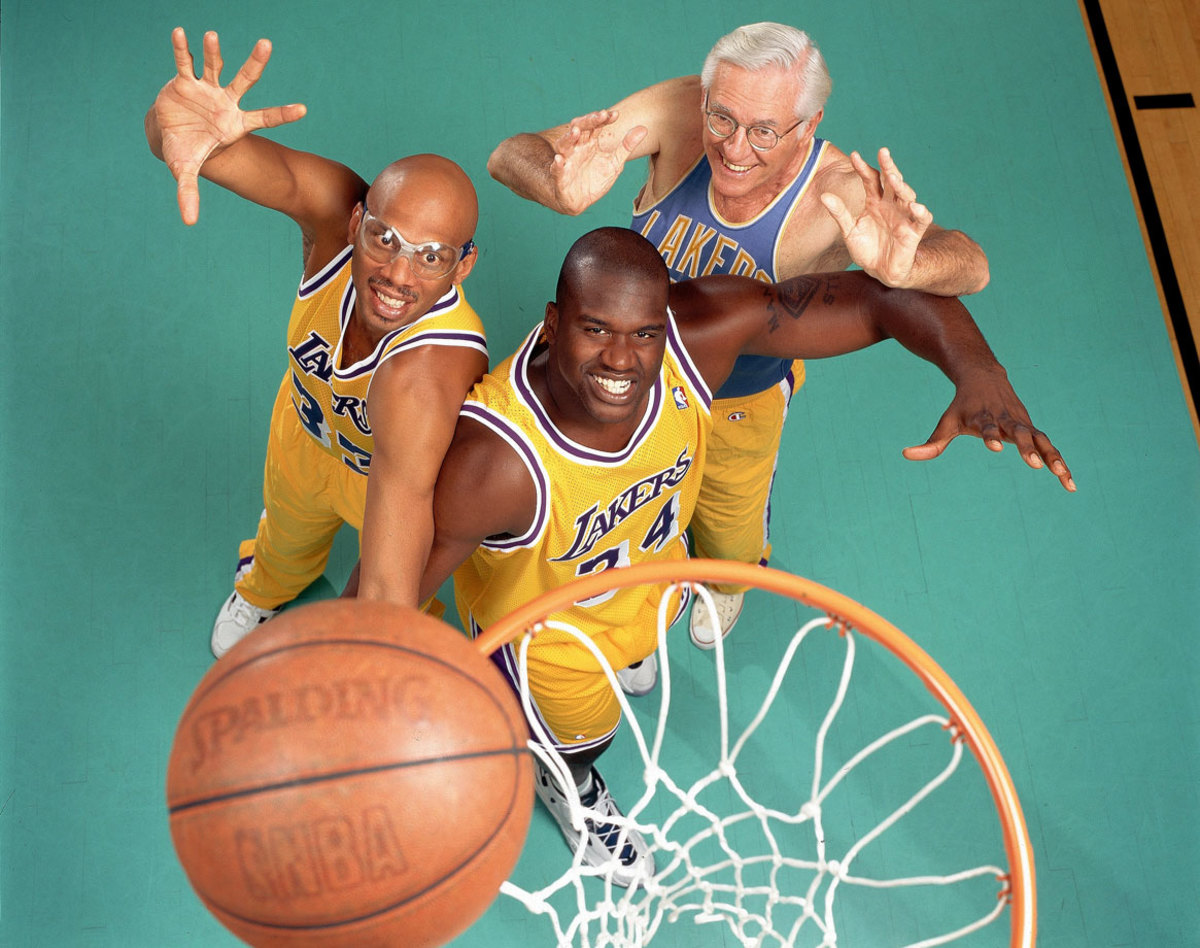
1996
Shaquille O'Neal
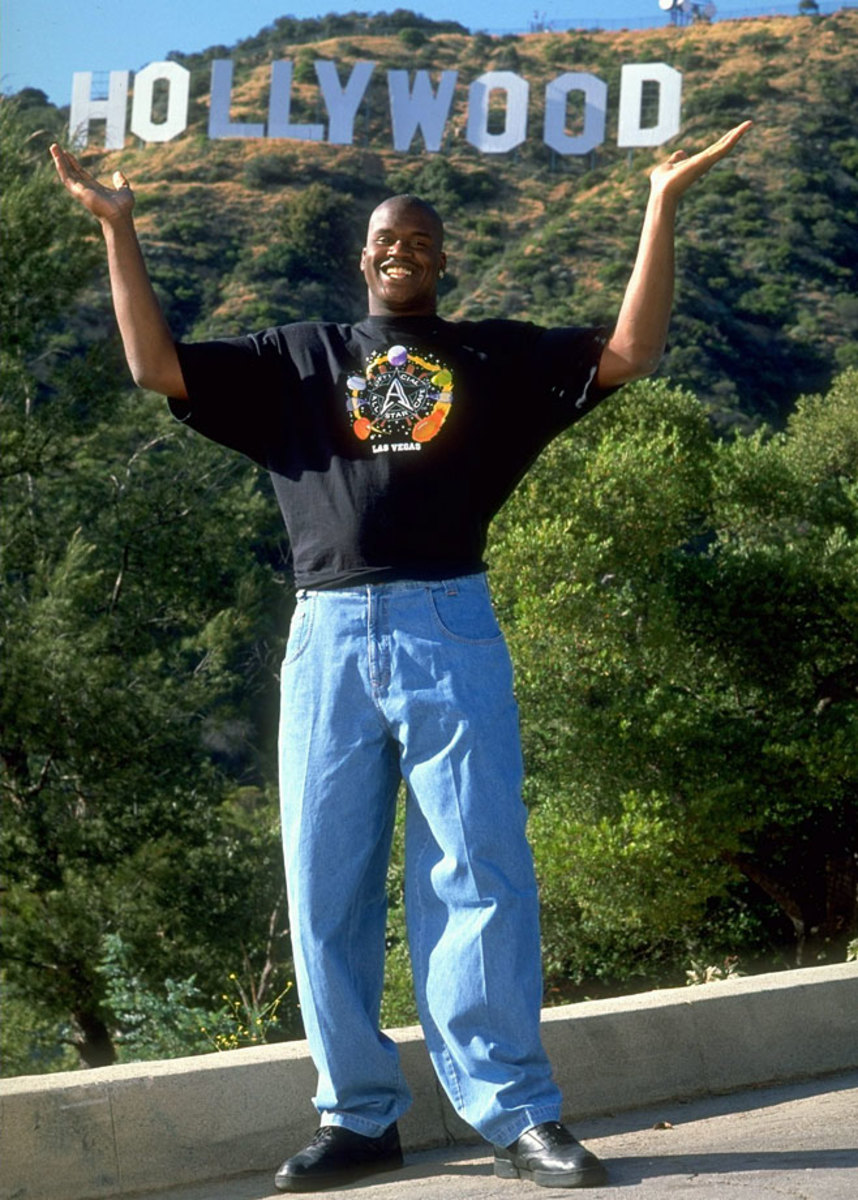
1997
Shaquille O'Neal with friends Jerome Crawford and Andre Spellman
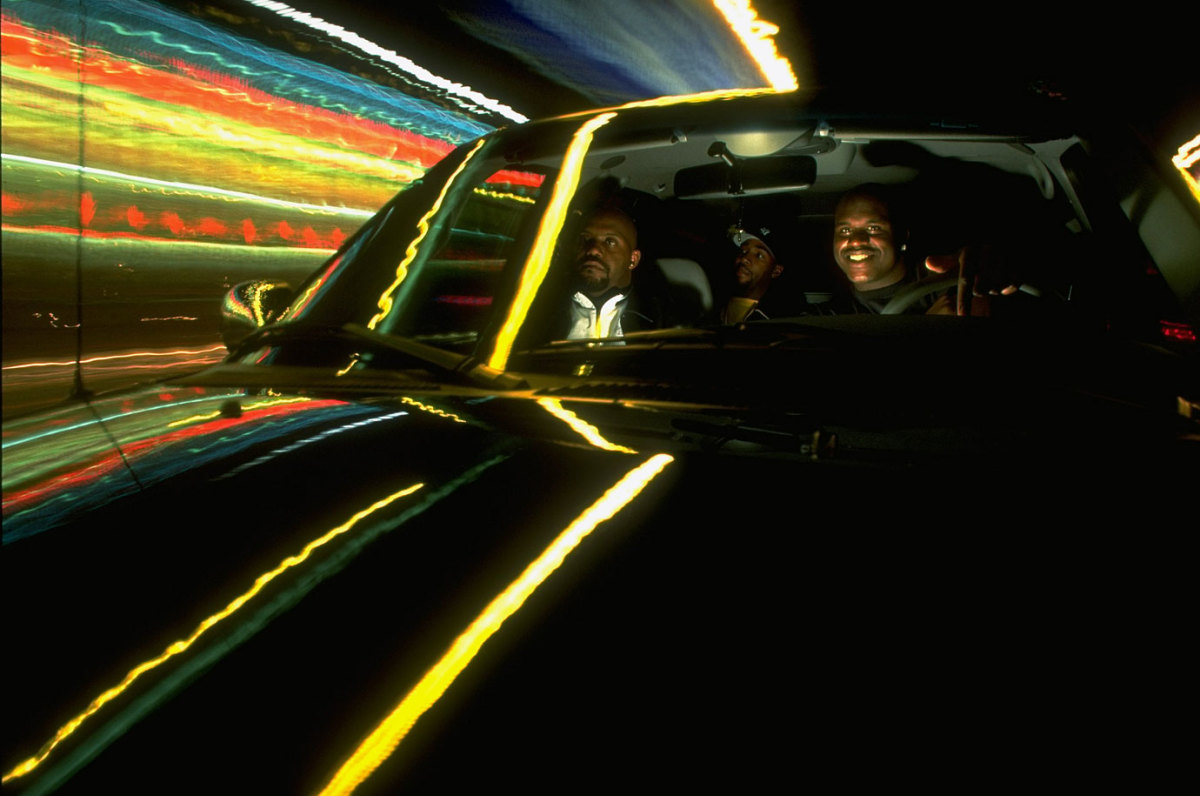
1997
Shaquille O'Neal with friends Jerome Crawford, Kenny Bailey and Andre Spellman
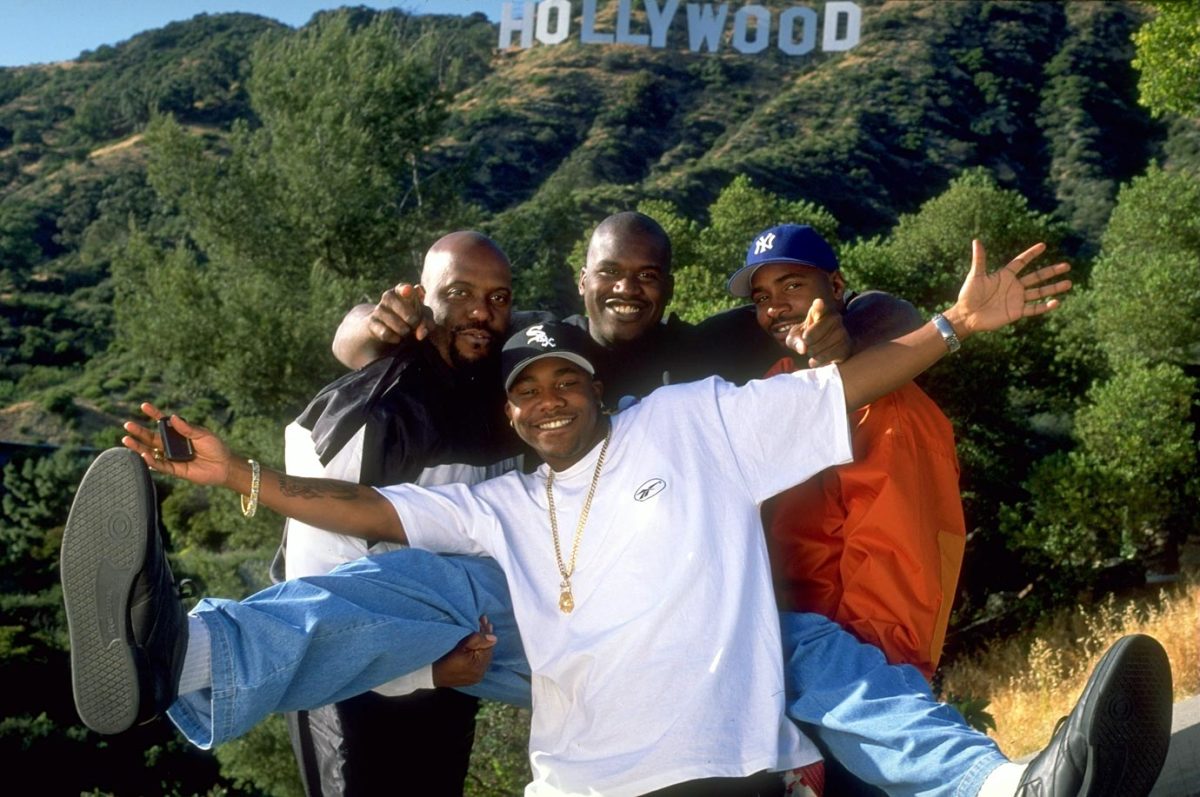
1997
Shaquille O'Neal
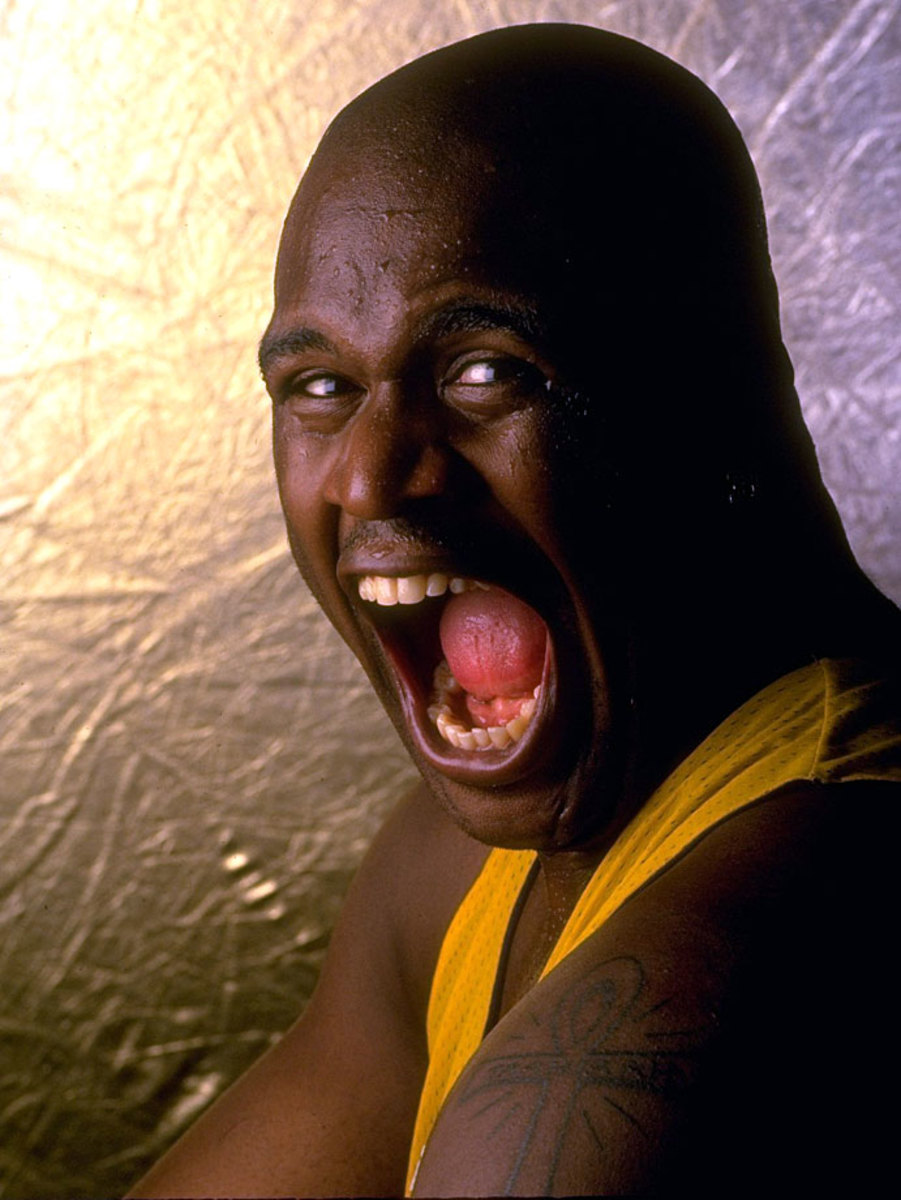
1997
Kobe Bryant and Shaquille O'Neal
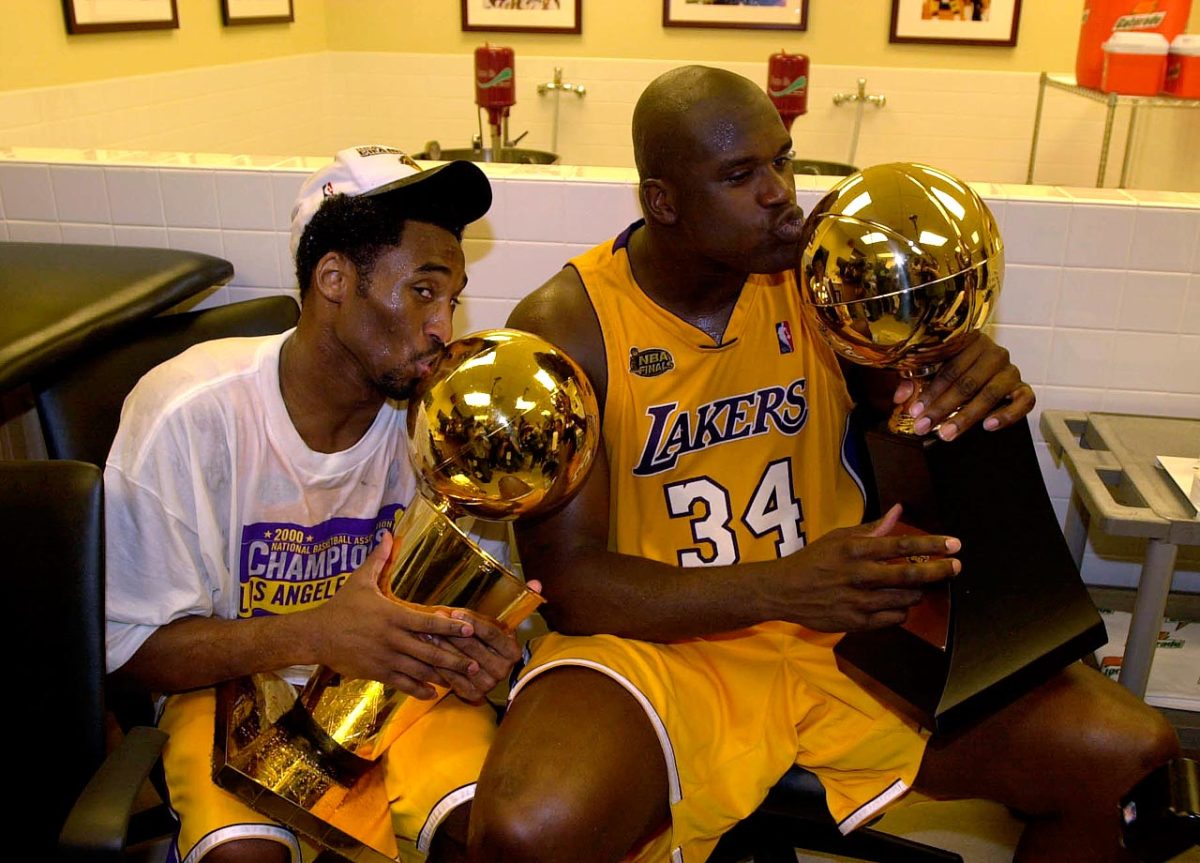
2000 NBA Finals - Game 6
Shaquille O'Neal and Chris Tucker
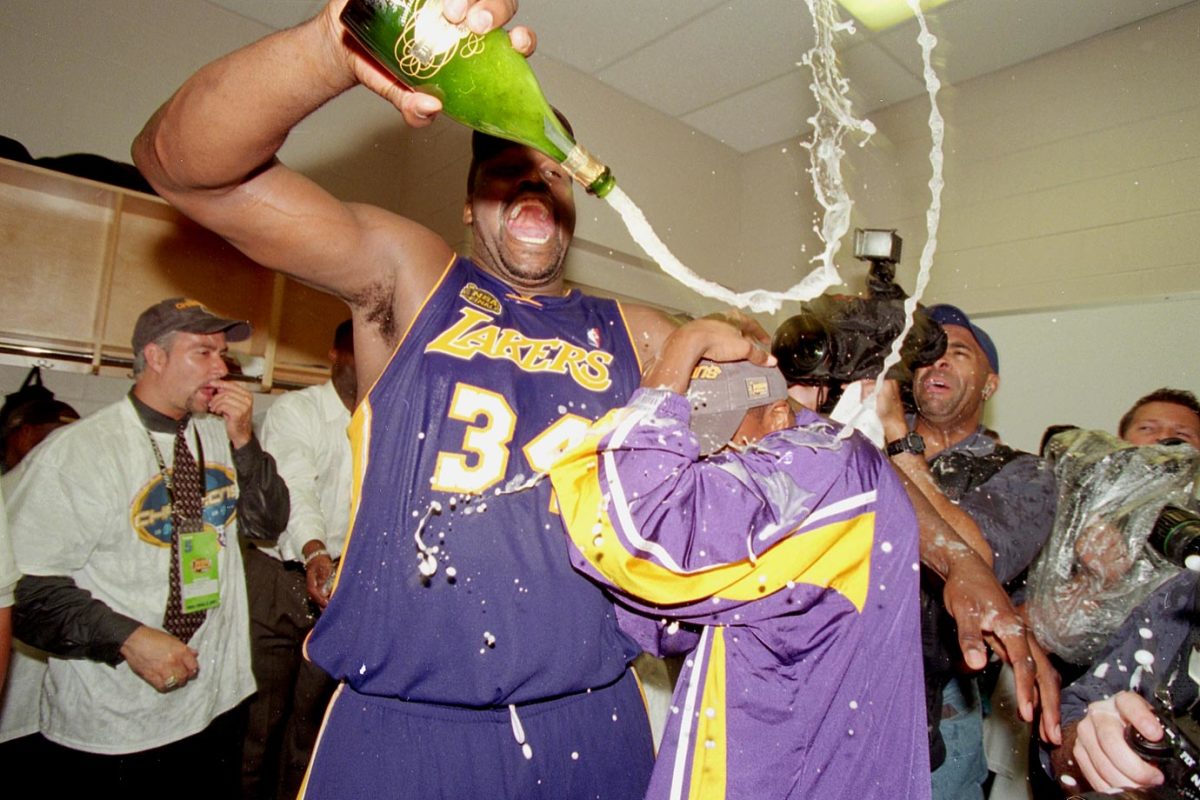
2001 NBA Finals - Game 5
Shaquille O'Neal
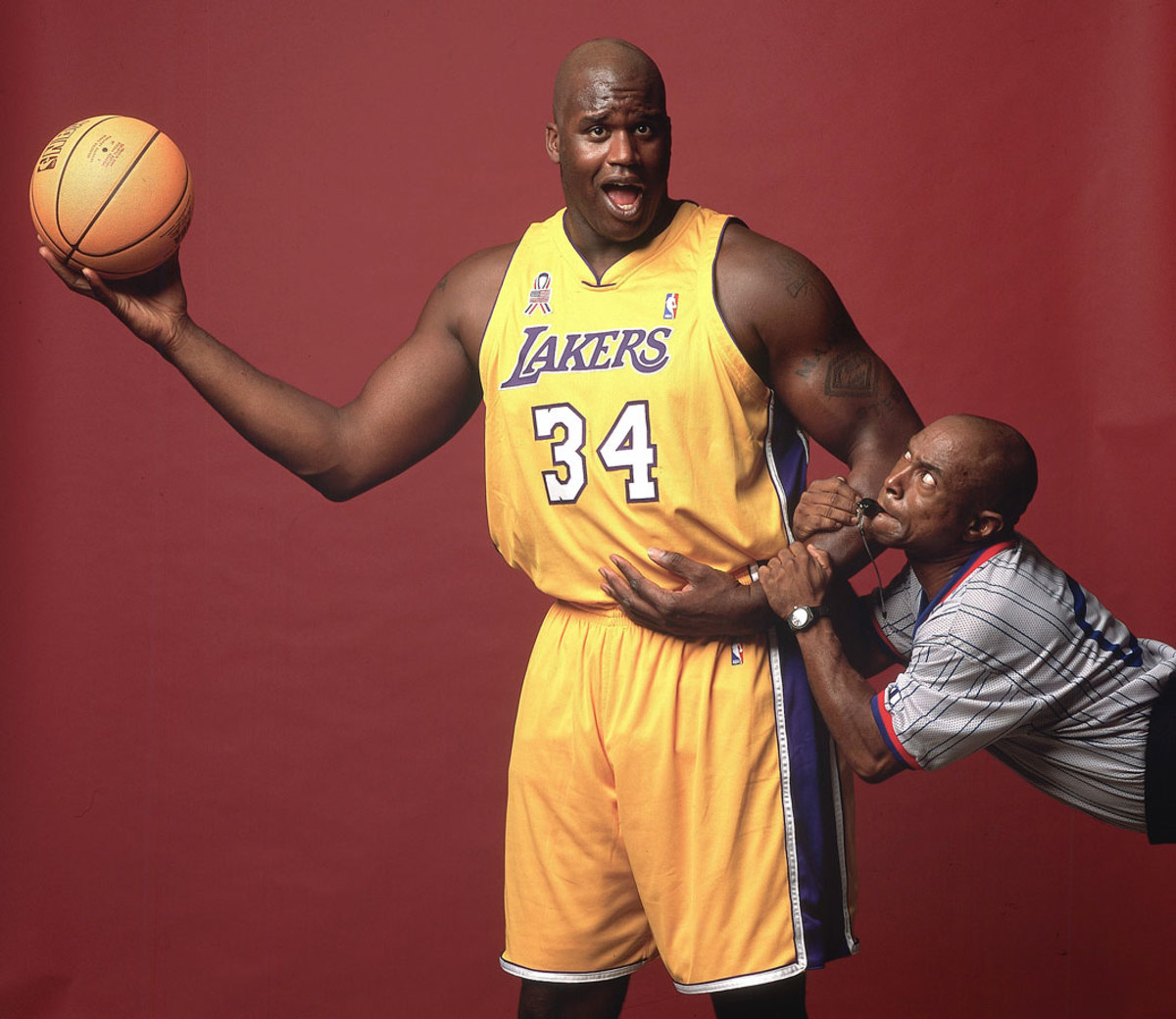
2001
Shaquille O'Neal
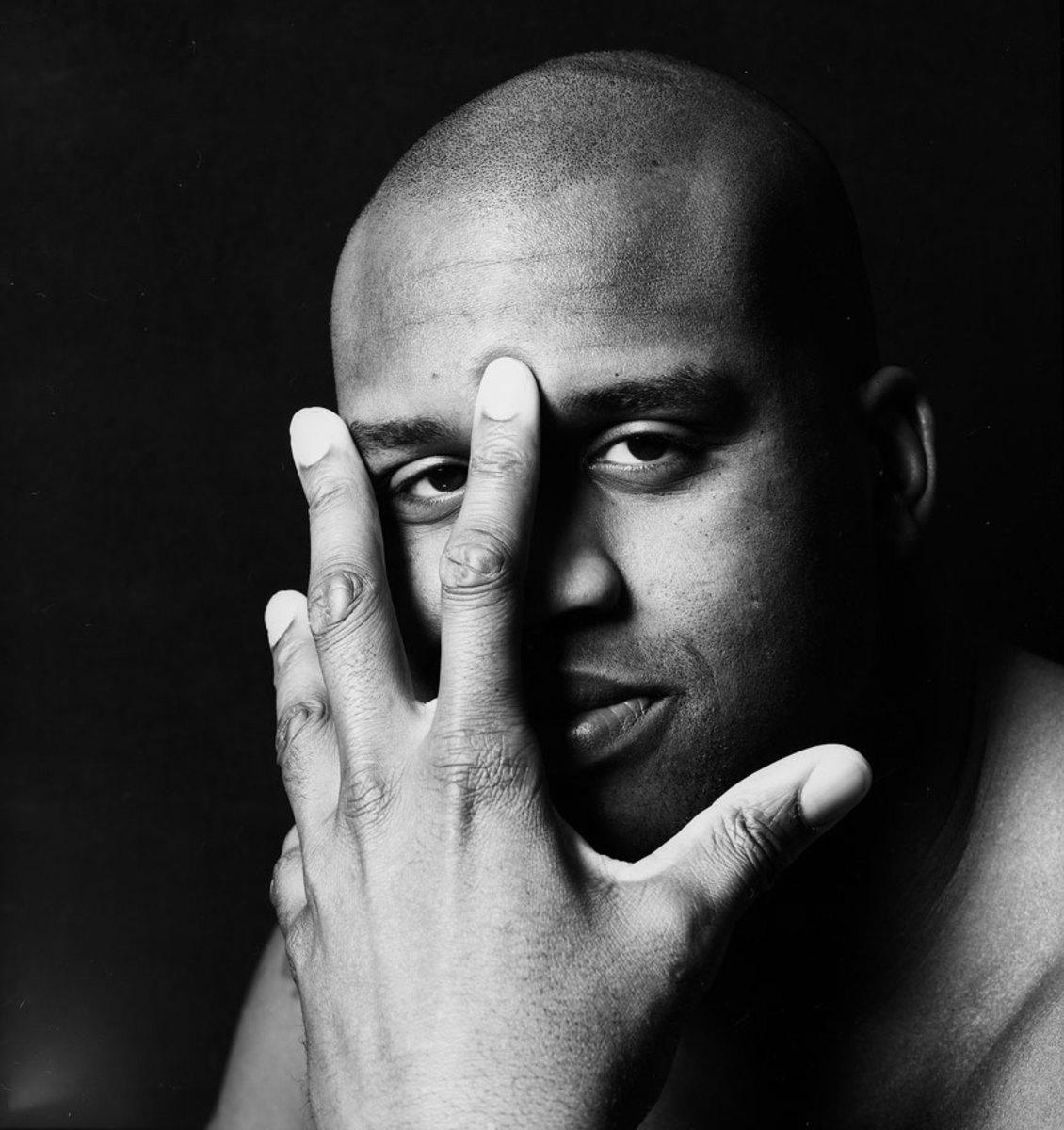
2002
Shaquille O'Neal and Kobe Bryant
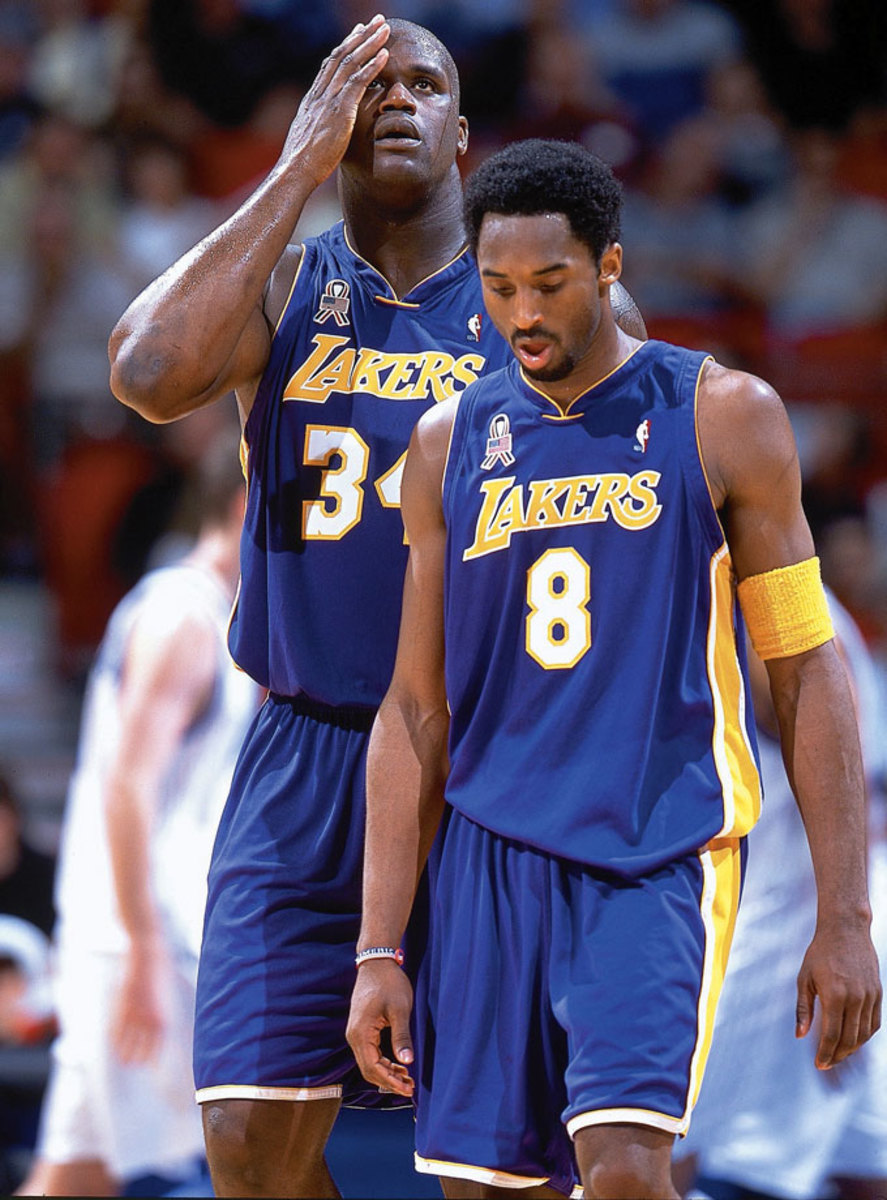
2002
Shaquille O'Neal
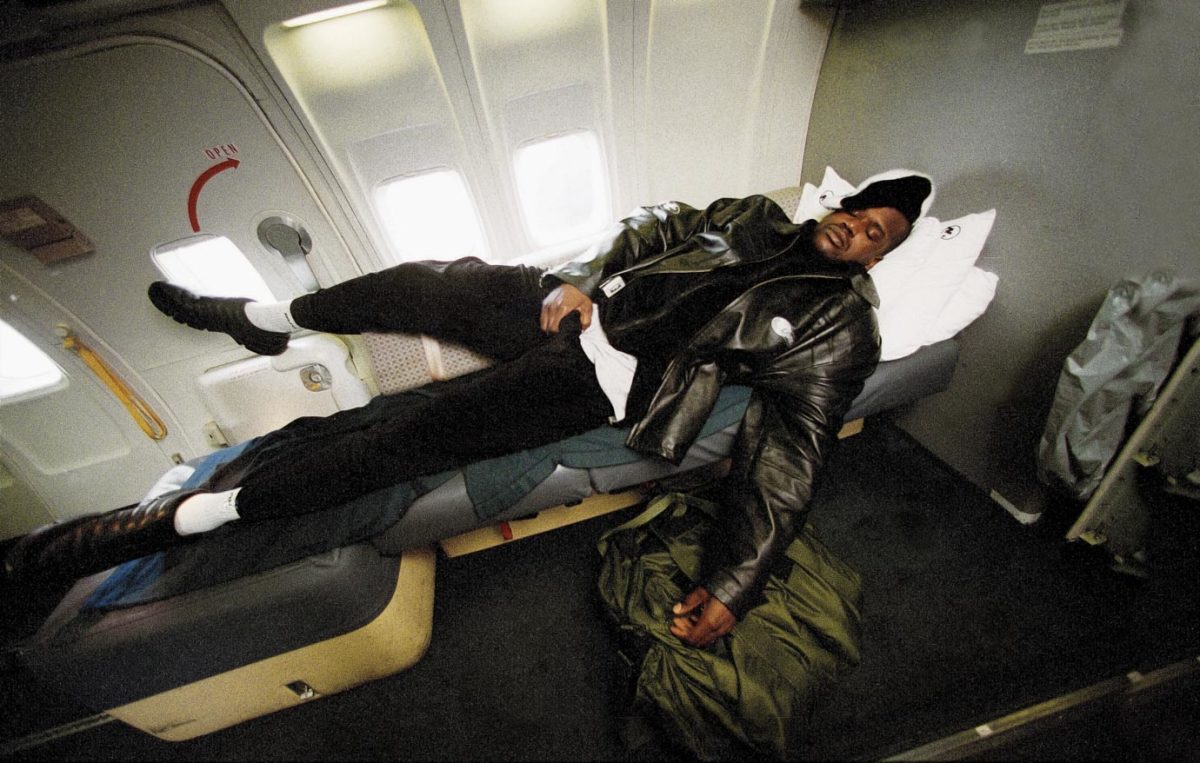
2002
Shaquille O'Neal
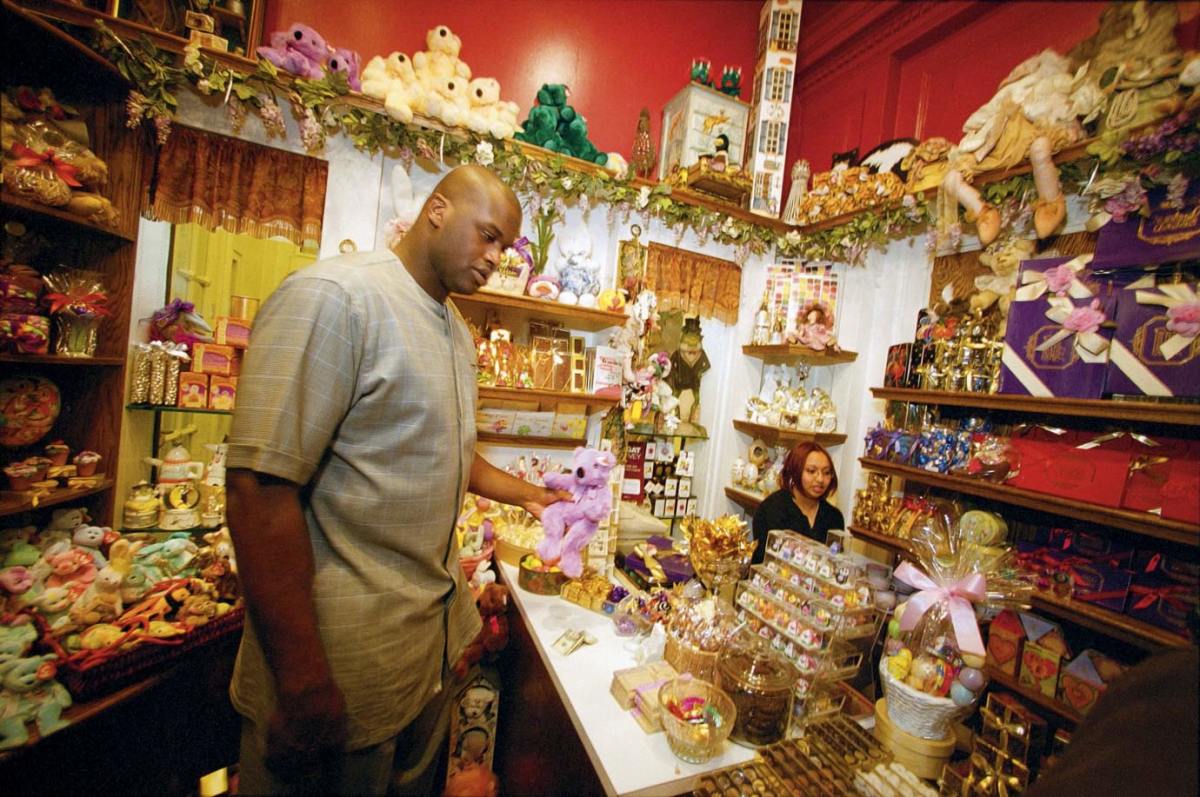
2002
Shaquille O'Neal and the Laker Girls
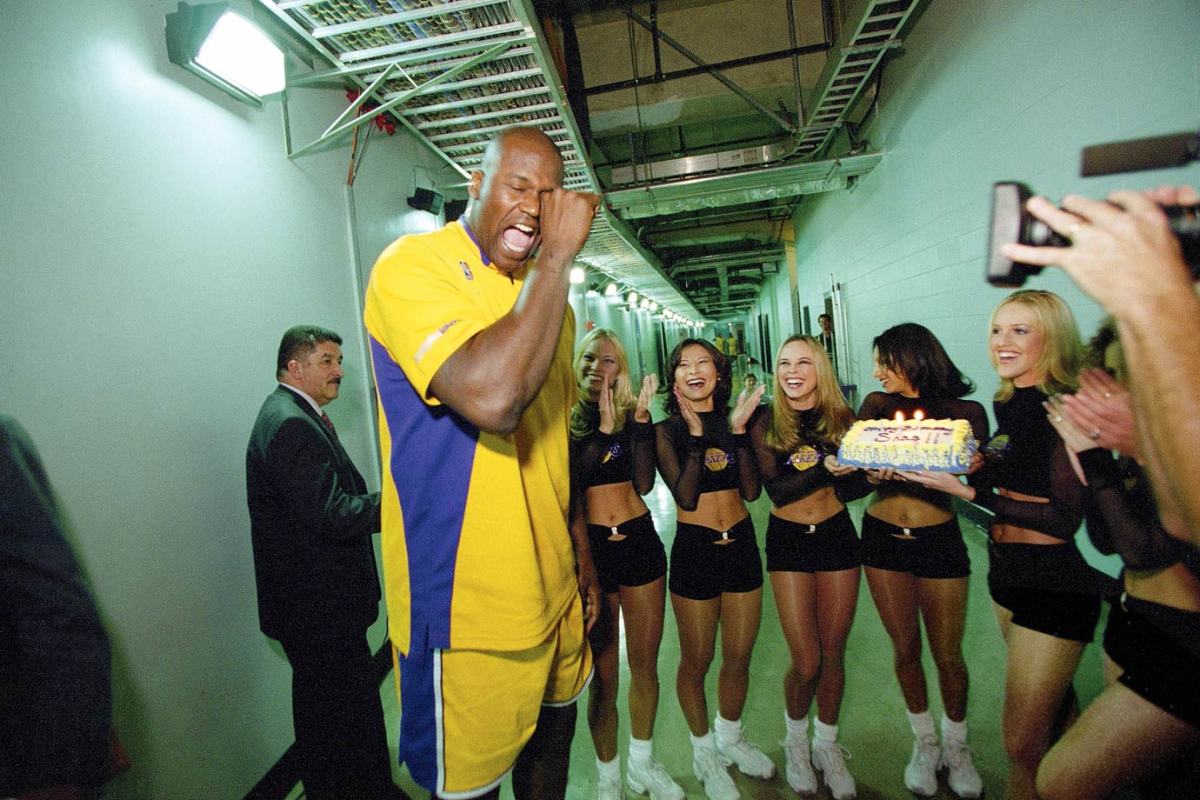
2002
Shaquille O'Neal with Lakers trainer

2002
Shaquille O'Neal
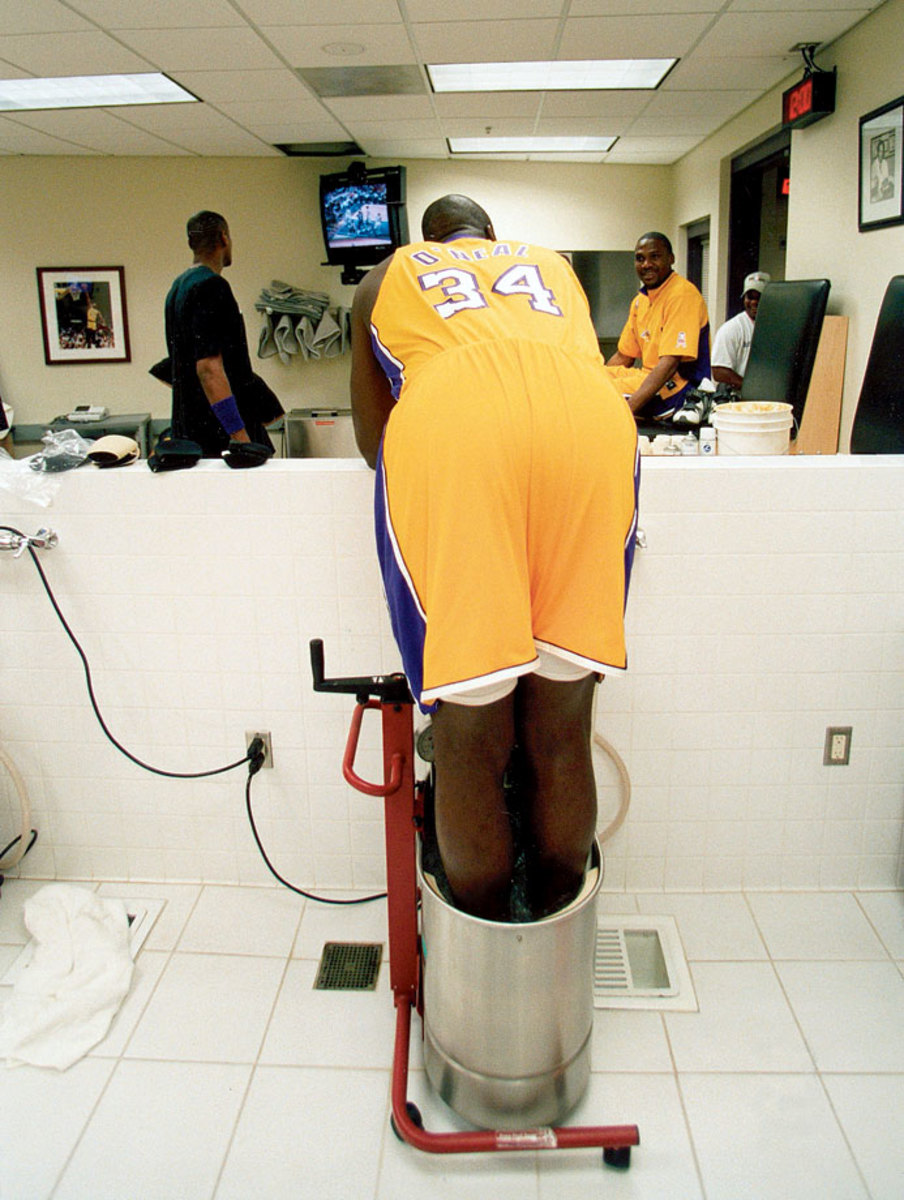
2002
Shaquille O'Neal and Kobe Bryant

2002
Shaquille O'Neal and Phil Jackson
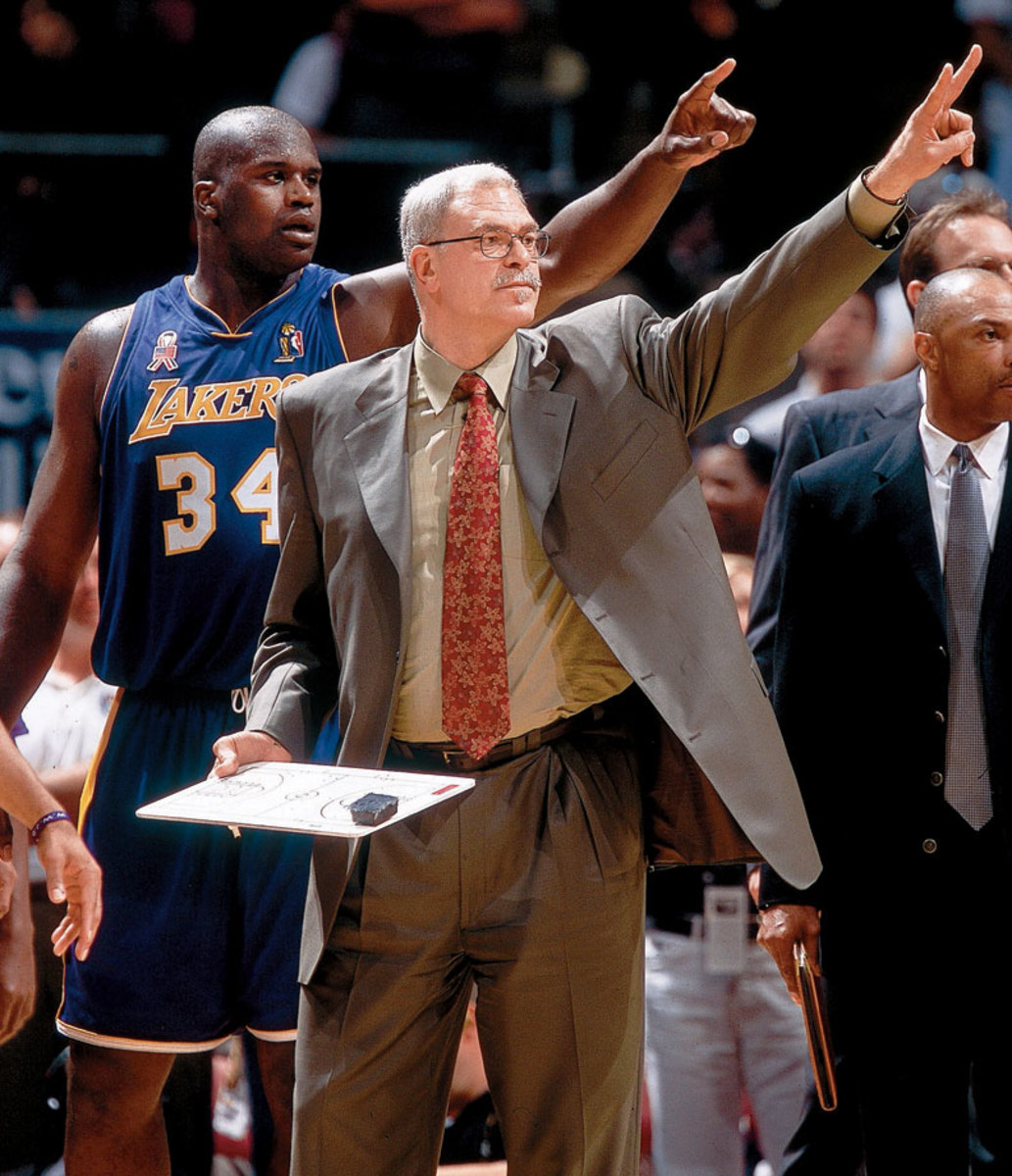
2002 NBA Finals - Game 3
Shaquille O'Neal, Jason Collins, Jason Kidd and Richard Jefferson
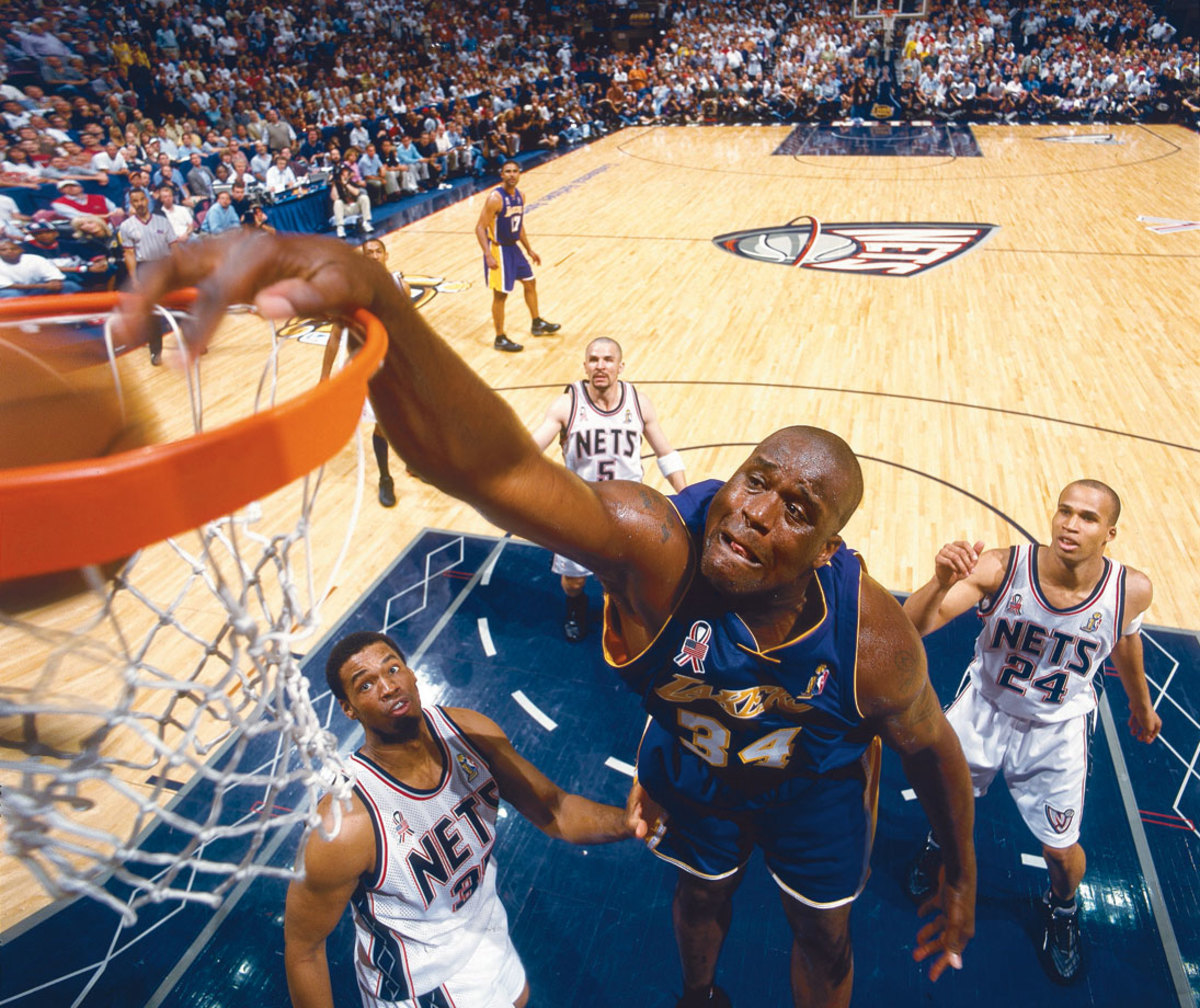
2002 NBA Finals - Game 3
Shaquille O'Neal
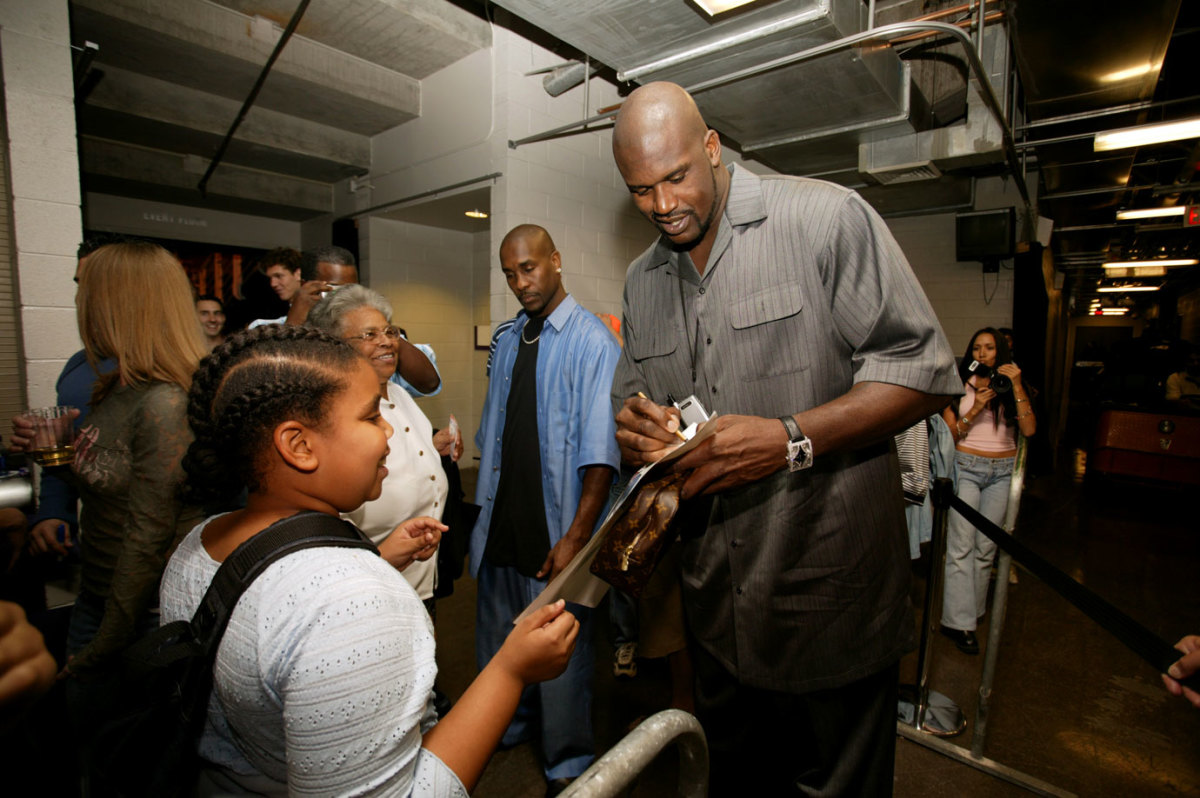
2003
Shaquille O'Neal and Yao Ming
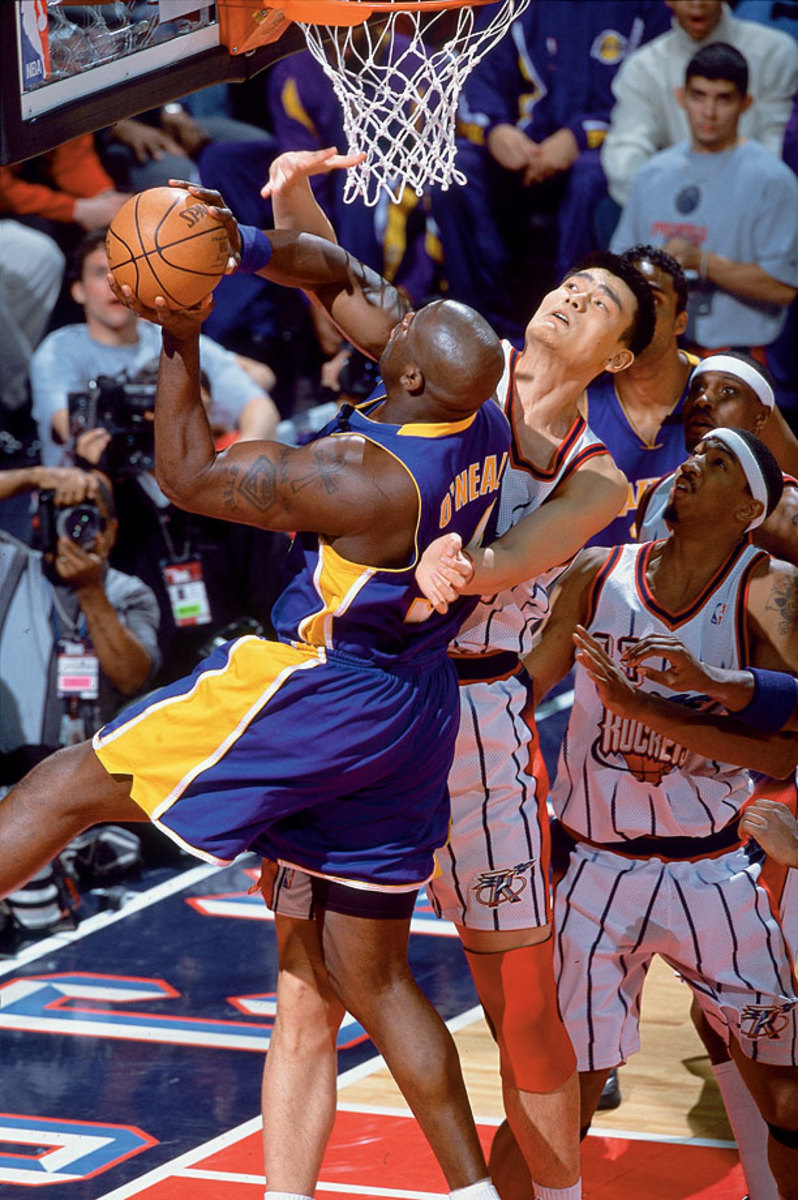
2003
Shaquille O'Neal and Earl Boykins
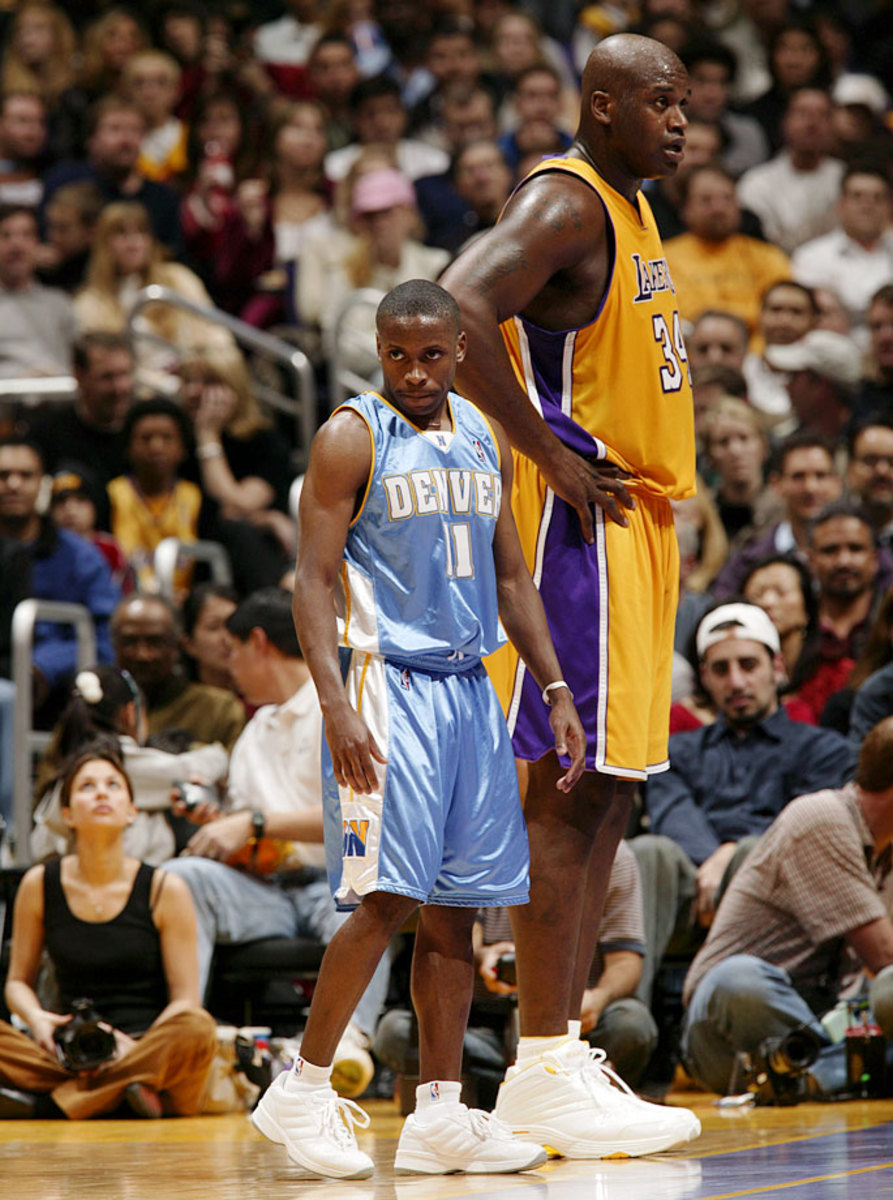
2003
Shaquille O'Neal, Dwyane Wade and Tyson Chandler
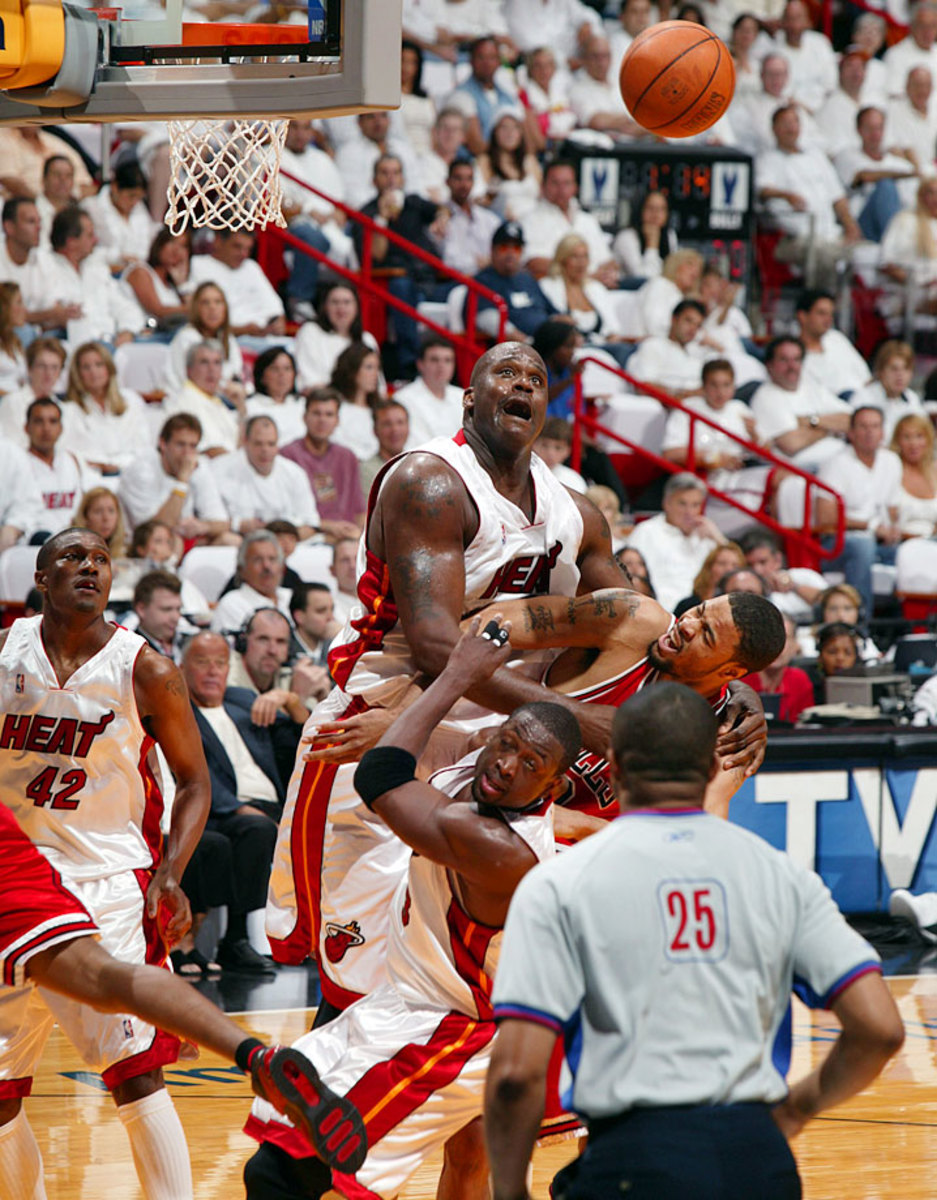
2006 NBA Eastern Conference Quarterfinals - Game 1
Shaquille O'Neal
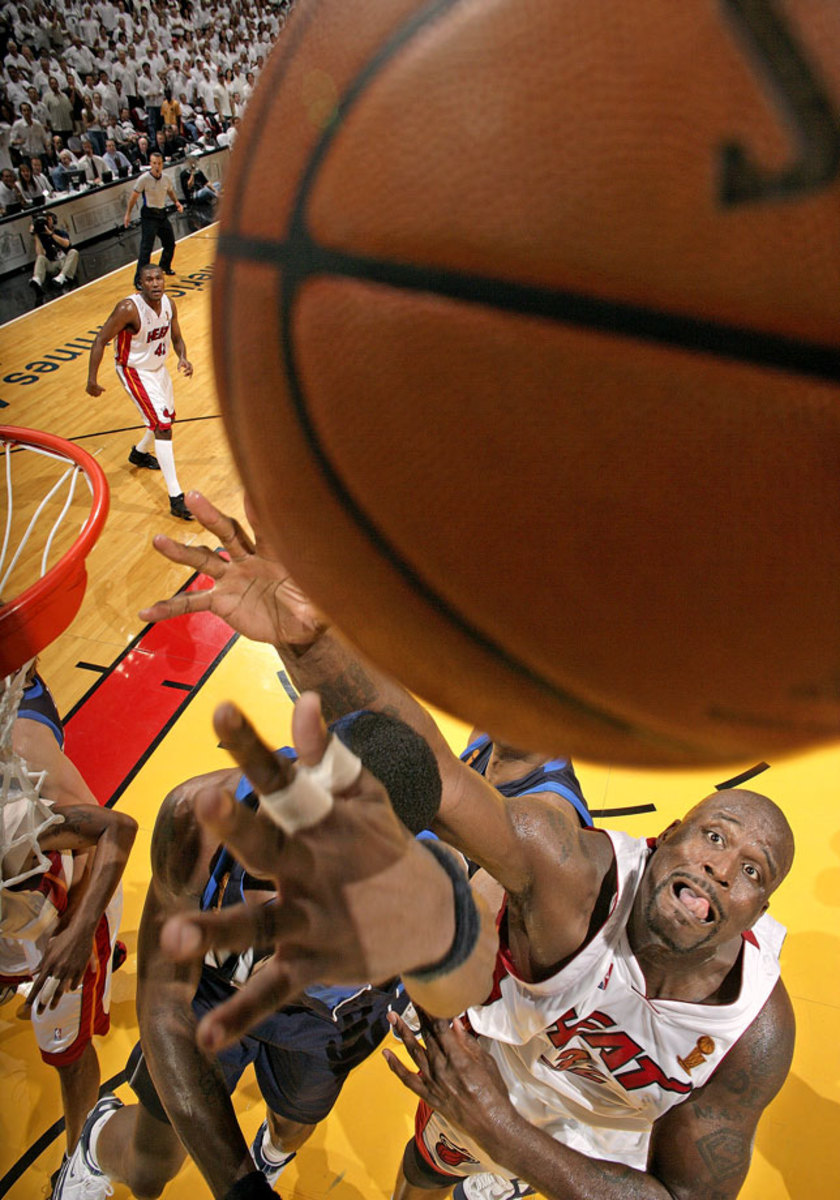
2006 NBA Finals - Game 3
Shaquille O'Neal
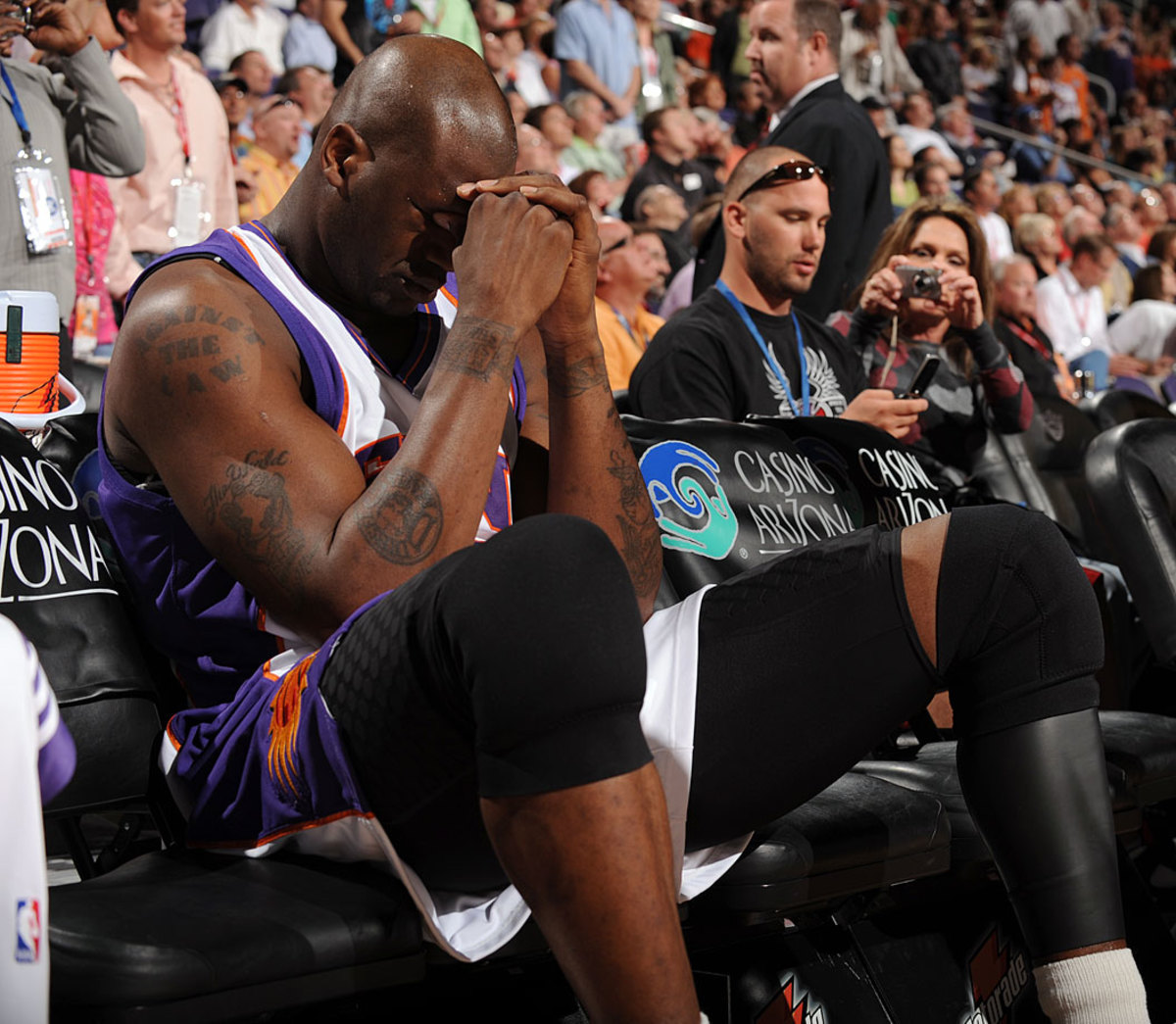
2008
Shaquille O'Neal, Steve Nash and Grant Hill
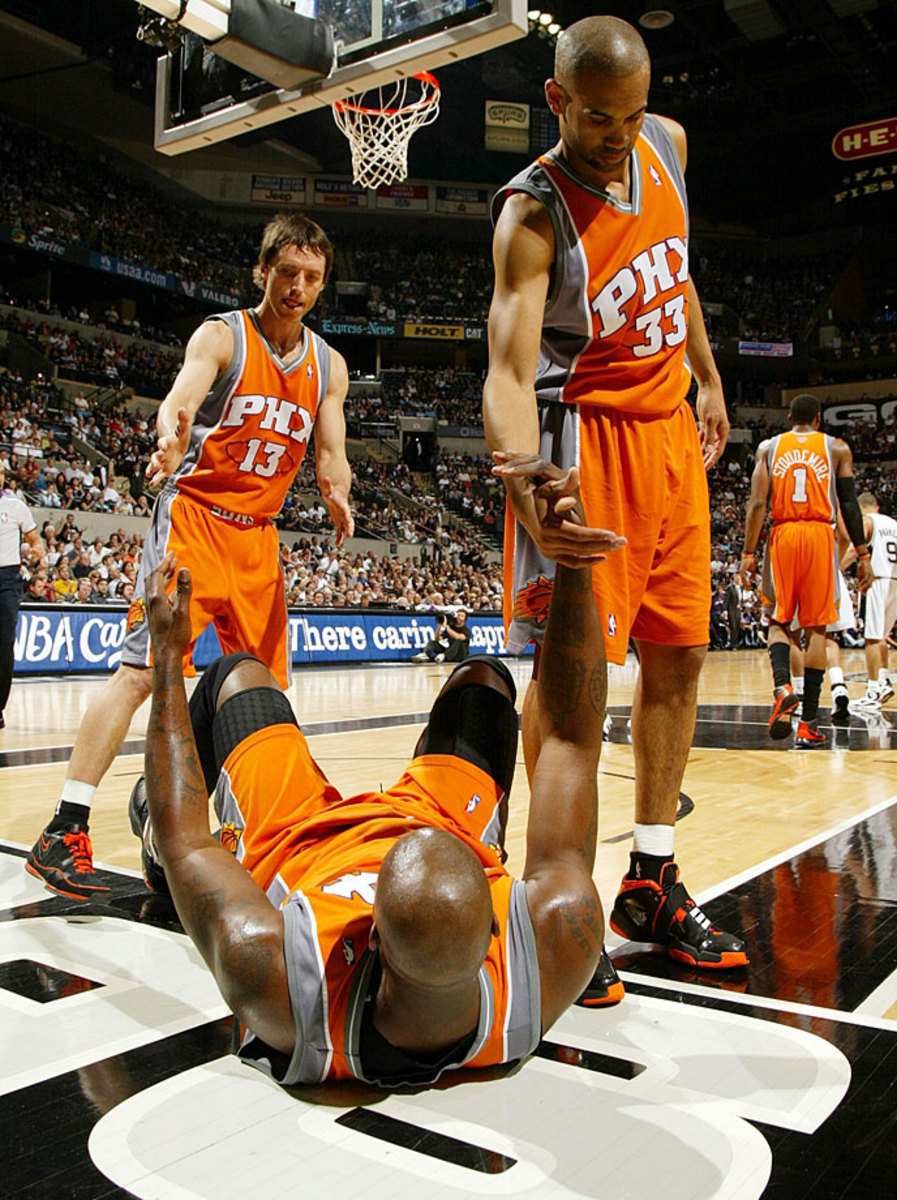
2006 NBA Western Conference Quarterfinals - Game 1
Shaquille O'Neal, LeBron James and Kobe Bryant
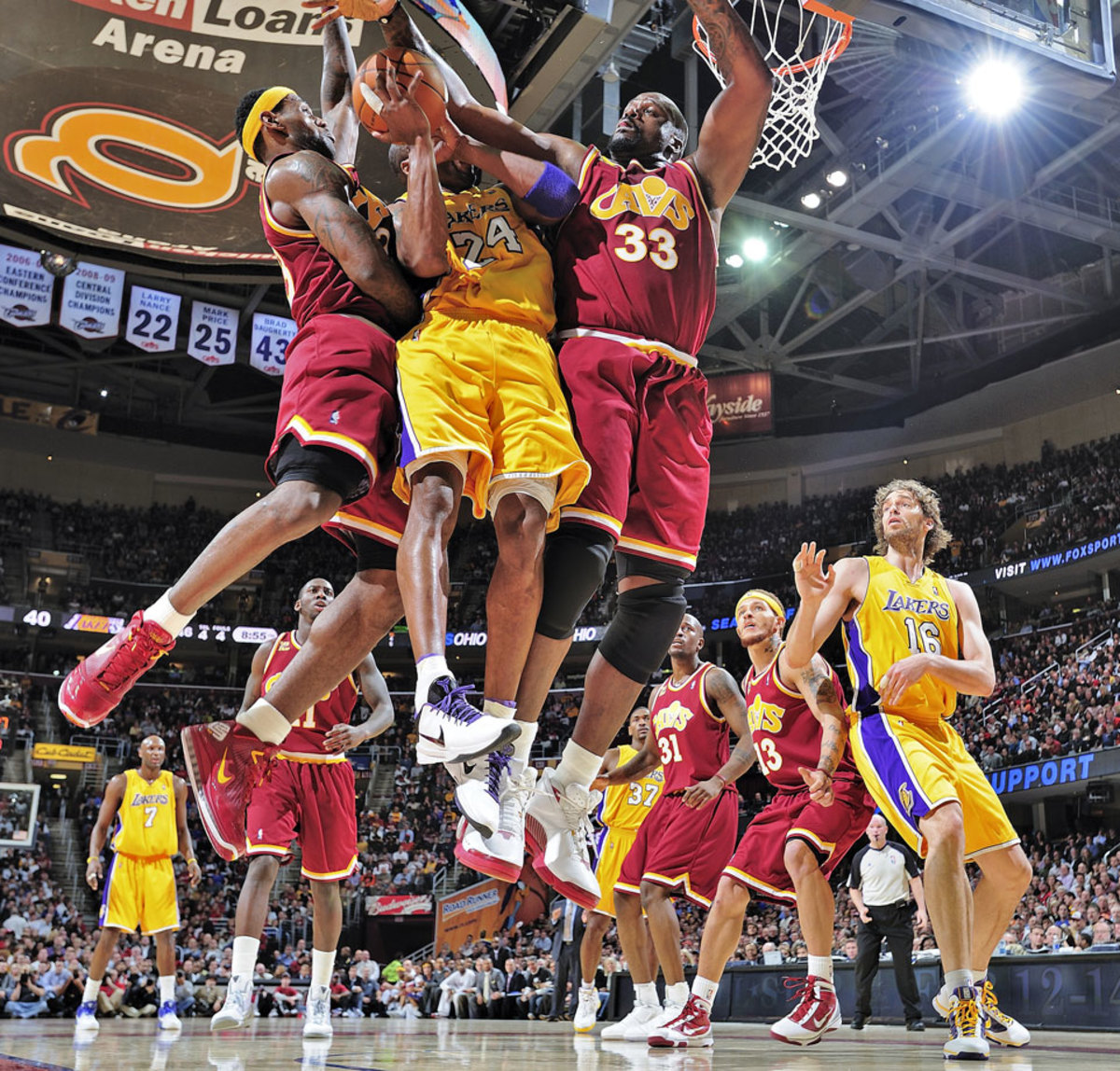
2009
Shaquille O'Neal
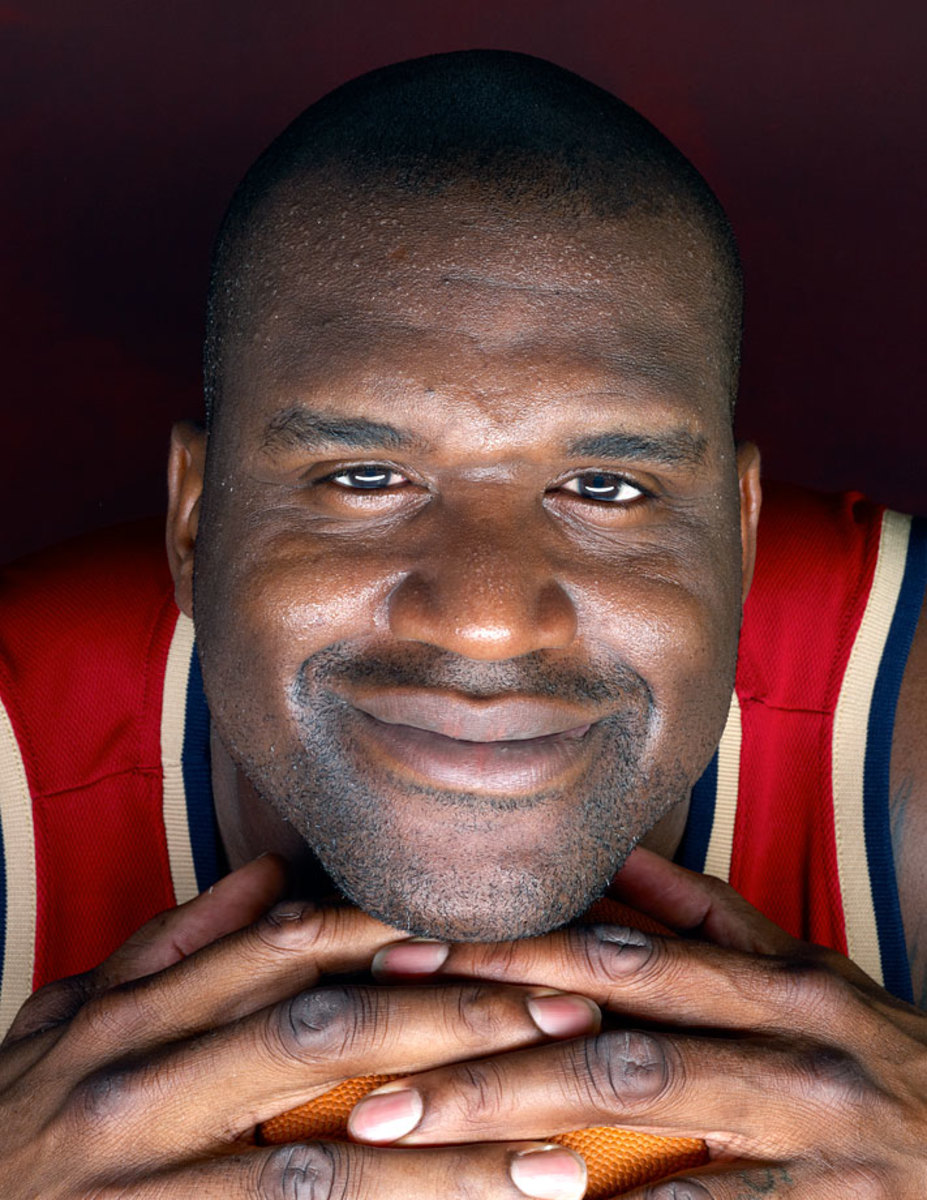
2010
Shaquille O'Neal, Glen Davis and Manu Ginobili
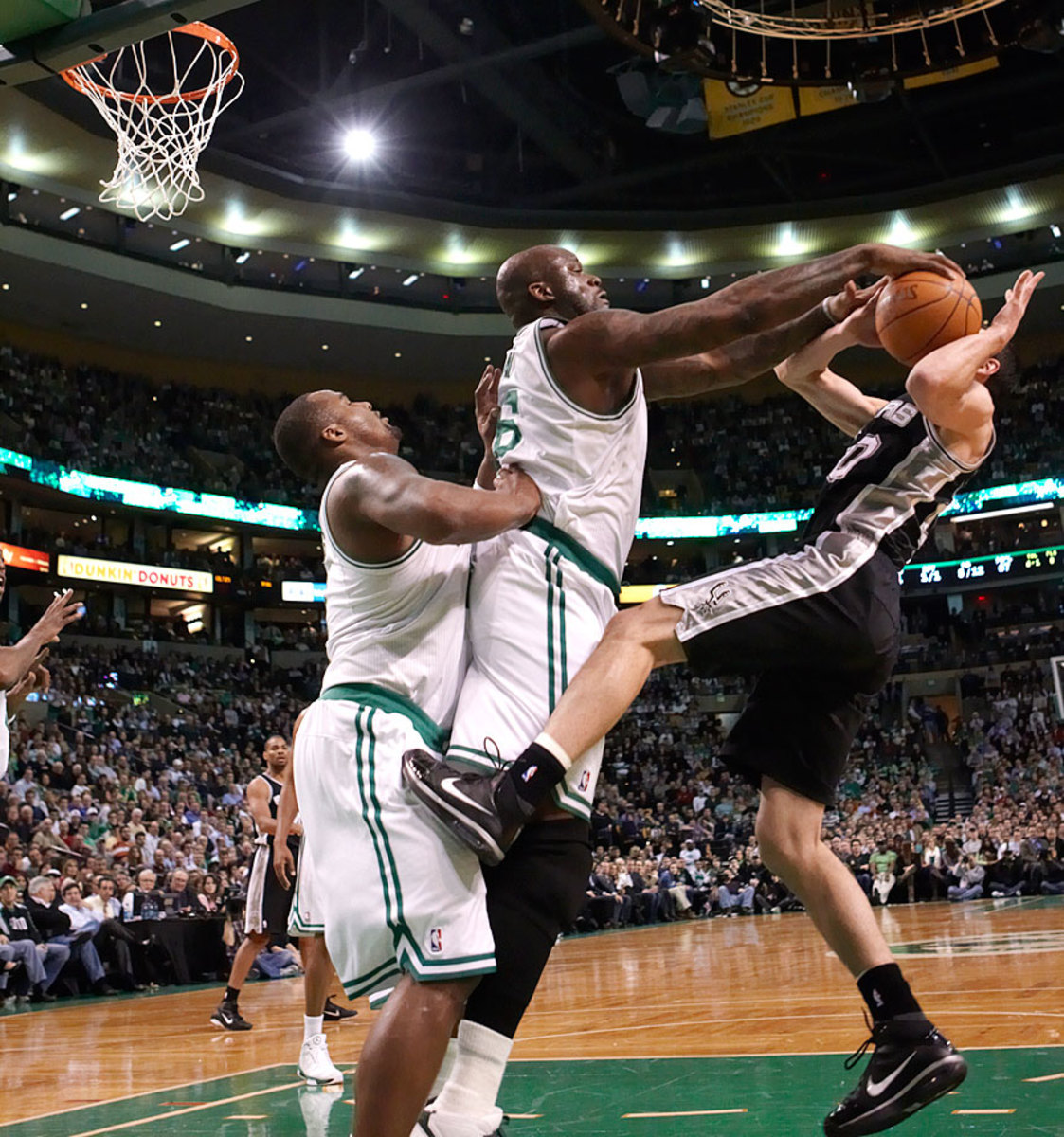
2011
Shaquille O'Neal
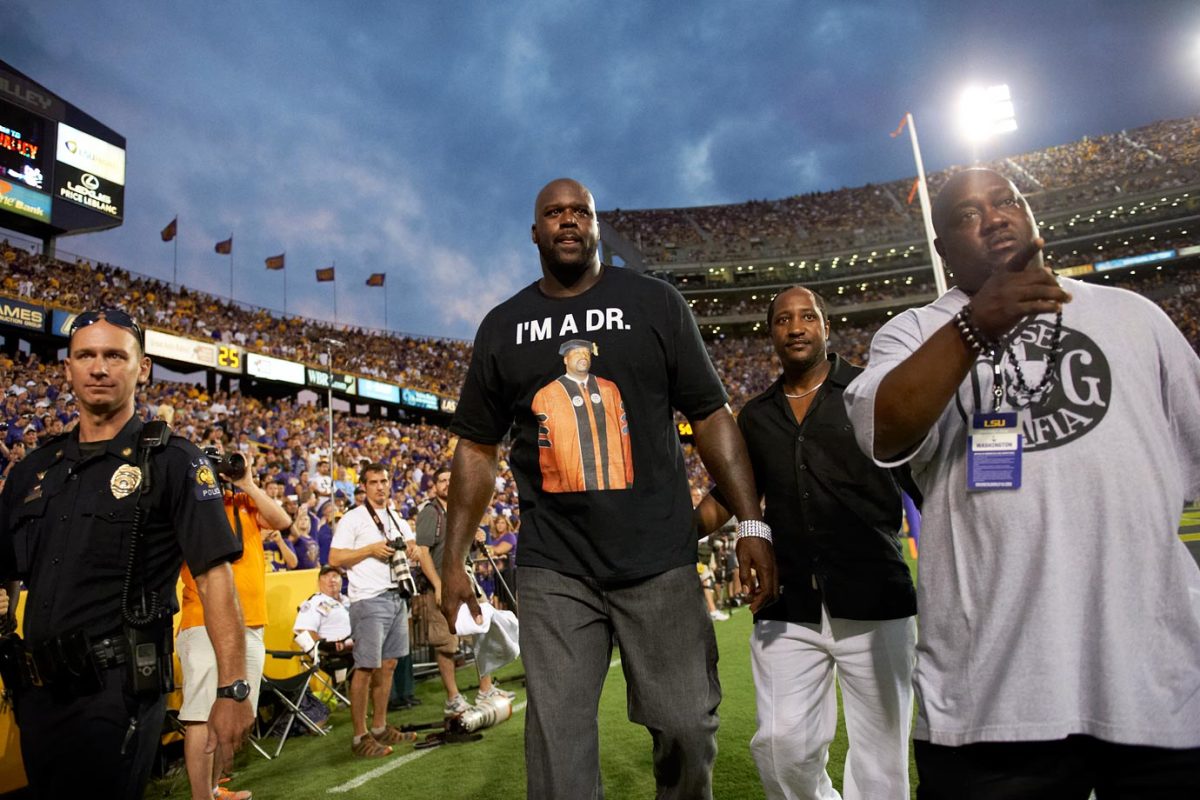
2012 LSU vs. Washington
Shaquille O'Neal
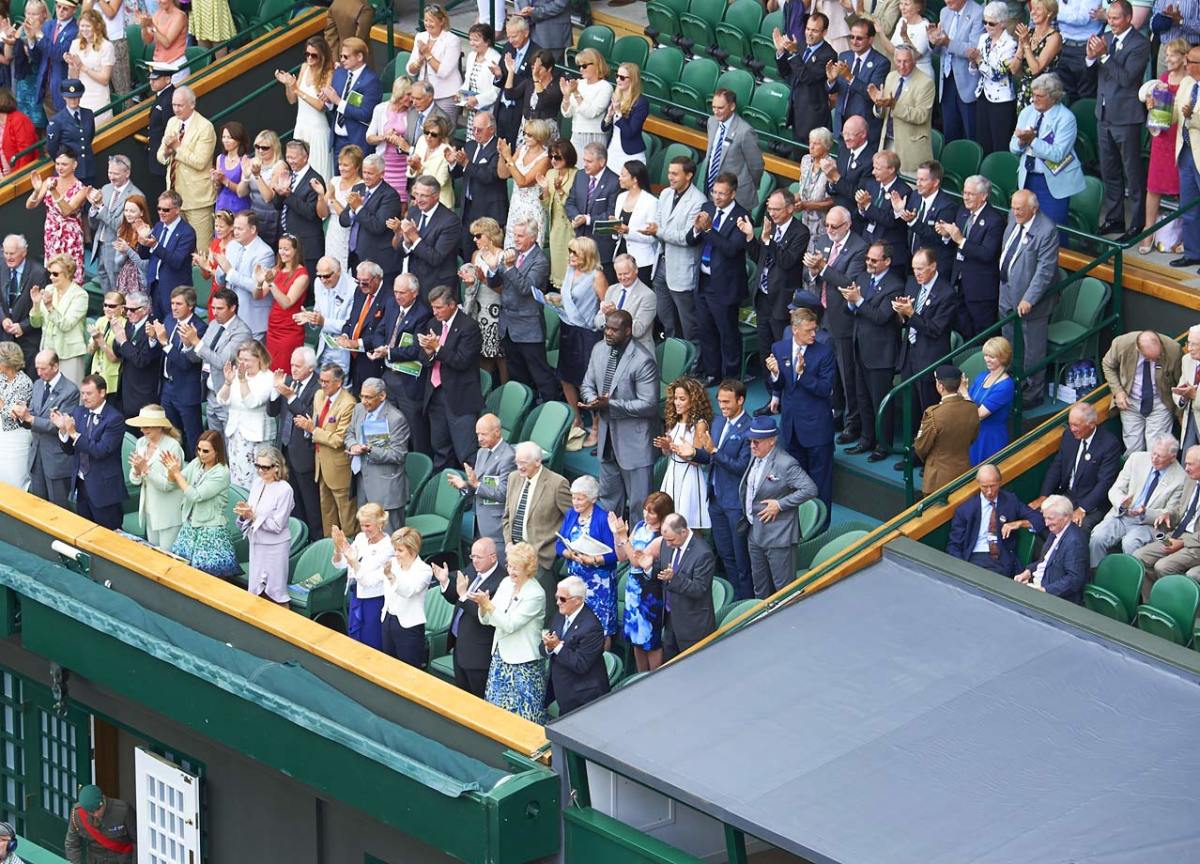
2014 Wimbledon - Day 1
1997
Needless to say, O’Neal settled into L.A. life just fine. Rick Reilly rode around with him one day, with the music blasting.
You could employ a small country helping Shaq pursue his ancillary interests. This is what he has going in Los Angeles as we speak (ready? Inhale!): This summer he will appear in his third movie (Steel, produced by Quincy Jones); he has his own record label and line of clothing (TWIsM: The World Is Mine); he is promoting his third rap CD (You Can't Stop the Reign); he is developing his own TV series (Hoops, a basketball-themed show); he has been nominated for a Grammy as a contributor to a music compilation produced by Jones (Q’s Jook Joint); he has his own Web site (www.shaq.com); he has marketing relationships with more than 10 companies (which he sometimes plugs ad nauseam—when he signed with L.A., he said the way for the Lakers to win was, “Play hard, drink Pepsi and wear Reeboks”); he is a partner in the entertainment company A.S.E. (Armato is Shaq Entertainment—get it?); he and the Universal Studios theme park are developing a Shaq “entertainment venue,” in which you will be able to pursue your favorite Shaqtivities, such as recording rap music, playing video games and jamming basketballs—but not, at least so far, sitting in a car and having your ears turned to Gerber’s. (Exhale.)
“In the last year?” says Bucky, Shaq’s driver-personal assistant-gofer. “I’ve had one day off. I mean, the guy never stops.”
In 2017, O’Neal’s laundry list of marketing and brand opportunities might not seem that insane. But in 1997?
Reilly also shed some light on O’Neal’s continued path toward the first championship of his career.
In Orlando small things seemed to pile up on the big man. He hated the poll the Orlando Sentinel took in his last season, asking, “Is Shaq worth $115 million?” and he hated the predictable answer: 91.3% said, Hell no. He hated the power struggle with his coach, Brian Hill. He hated being such a big fish in a medium-sized tank. In L.A. he is one of hundreds of very big fish in the biggest and brightest fish tank in the world.
“I never dreamed I’d be playing for the Lakers,” Shaq says in a rare quiet moment. “When I was a kid, I hardly had any self-esteem. Did you know I skipped first grade? And it was like there were some things I wasn’t good at. I used to be coloring and thinking I was doing pretty good, and then I’d look at the kid next to me, and his drawing would be so much nicer, you know? Neater. All inside the lines. When I was 13, I was 6' 7" and couldn’t dunk. And the kids would say, ‘Man, you so soft! You can't even dunk!’
“I’ve always listened to the iffers. They’d be like, ‘Yeah, you doin’ good in high school, but if you get to the McDonald’s All-America game you ain’t gonna do s---!’ And then it was, ‘Yeah, you an All-American at LSU, but if you get to the pros, you won’t be nothin’!’ And now it’s, ‘Yeah, you got all these movies and ads and rap CDs and stuff, but you ain’t never won a championship.’ Well, I'm glad I got my iffers, because they keep me hungry.”
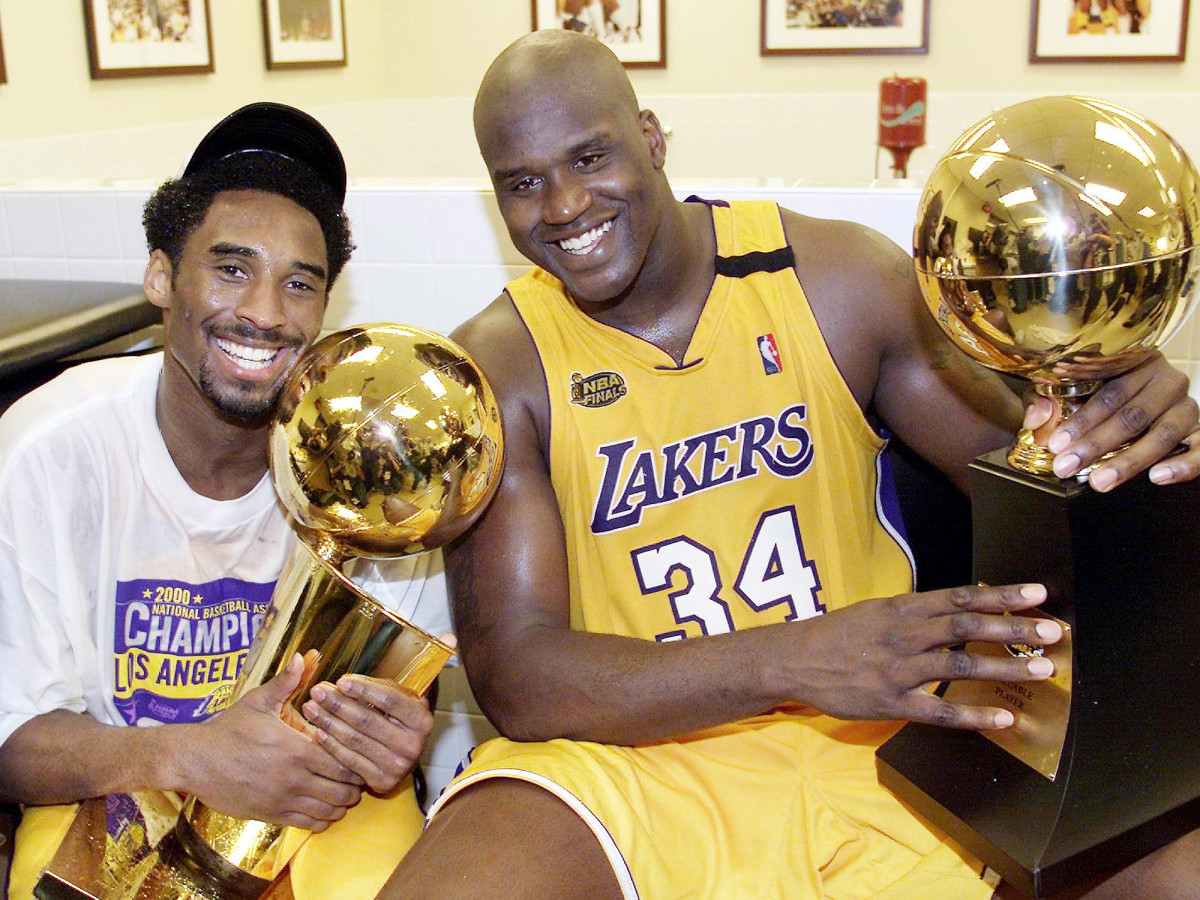
2000
It took four seasons in L.A. and the arrivals of coach Phil Jackson and Kobe Bryant, but O’Neal finally claimed his first championship and his only MVP award in 2000. His numbers that season were preposterous: 29.7 PPG, 13.6 RPG, 3.8 APG and 3 BPG, a stat line matched by only one player in NBA history: Abdul-Jabbar in 1975.
O’Neal rampaged through the playoffs to claim his first title, pouring in 40-plus points in three of the six Finals games against Indiana. Taylor writes that O’Neal solidified his oft-questioned reputation as a leader during the title run.
“We see how hard he works at it,” says [Brian] Shaw. “We see how he takes the criticism and the hard fouls and the crazy Hack-a-Shaq stuff and keeps at it. It makes you realize that if he’s willing to go through all that without losing his cool, he must want to win more than anything. If he wants it that badly, you want to win it not just for yourself but for him too.”
When Bryant was injured in the second quarter of Game 2, Shaq told them during a timeout that he expected to be gang-defended even more than before. “When I kick it out to you guys,” he said, “make some shots for me.”
It was his way of telling the Lakers that they were the only ones who could make Indiana fully pay for double- and triple-teaming him. He would take the pounding and the potential embarrassment at the free throw line if they would retaliate for him from the perimeter, which they did, making 7 of their 15 three-pointers, including 5 of 6 by Rice, in the 111–104 win.
“I know that I can’t do it myself,” O’Neal says. “Maybe early in my career I thought I could do everything, but I know now how important it is to have my teammates helping me out.”
O’Neal doesn’t lead by cracking the whip at practice, the way Michael Jordan did, nor is he a locker room orator, as Magic Johnson was. “He’ll have something to say in the big moments of a game, but it’s going to be short and direct,” says forward A.C. Green. “Whenever he opens his mouth we ride on it, because he doesn’t do it that often.”
2001
The O’Neal/Bryant pairing went on to capture titles in 2001 and ’02. After their second championship, which came after the Lakers went an eye-popping 15–1 during the postseason and defeated the Sixers, O’Neal said that he was “greedy ... very greedy” when it came to collecting jewelry.
Taylor writes that O’Neal also downplayed the notion that he and Bryant had personal differences.
“People think we hate each other,” O’Neal says. “We don’t hate each other. If we did, we never could have done this thing two years in a row.”
2002
O’Neal’s third and final title with the Lakers saw him dominate the Nets in the Finals yet again, capturing his third straight Finals MVP award.
McCallum writes that O’Neal marked the occasion by expressing his gratitude to his critics, who nitpicked his free-throw shooting, work ethic, weight, polish and focus earlier in his career.
“It’s at those times that Shaquille becomes the most influential player in the game,” said Jackson. “He has the ability to calm the effect of the crowd and get things to happen positively.” Shaq talked softly during timeouts, told his teammates they’ve been together far too long to fold, encouraged them to keep sniping at the Nets. They did, regaining control of the game and getting closer to title number 3.
Because Shaq’s influence on his team is so profound, because he has worked so hard at becoming a complete player and because he has played through so much pain, he bristles whenever it is suggested that his oversized body is the primary reason for his success—a suggestion that is made every night of the season.
“The truth is, I was created by you guys,” O’Neal told the media last week. “When I was a young player having fun, doing movies and doing albums, you criticized me all the time. I’d hear, ‘Shaq O’Neal is a great player, but he doesn’t have a championship. But he’s not hitting free throws.’ So, after taking criticism all my life, I know how to turn it into positive energy.” Then he broke out into a huge smile. “So this is what you created, and I’m glad you did. Thank you, and I love you all.”
He got up and left with everybody feeling happy. It was vintage Shaq, which can also be said about these Finals.
2004
The long-rumored O’Neal/Bryant split came to fruition in 2004 when the Lakers obliged their head-strong shooting guard by dealing O’Neal to the Heat. Suddenly, the race was on: Would O’Neal win more titles without Bryant or would Bryant win more titles without O’Neal?
McCallum wrote that “some 400 number 32 jerseys were ordered from the Heat’s website in the first two hours they were available,” with president Pat Riley comparing the team’s ticket sales to “the floor of the New York Stock Exchange.”
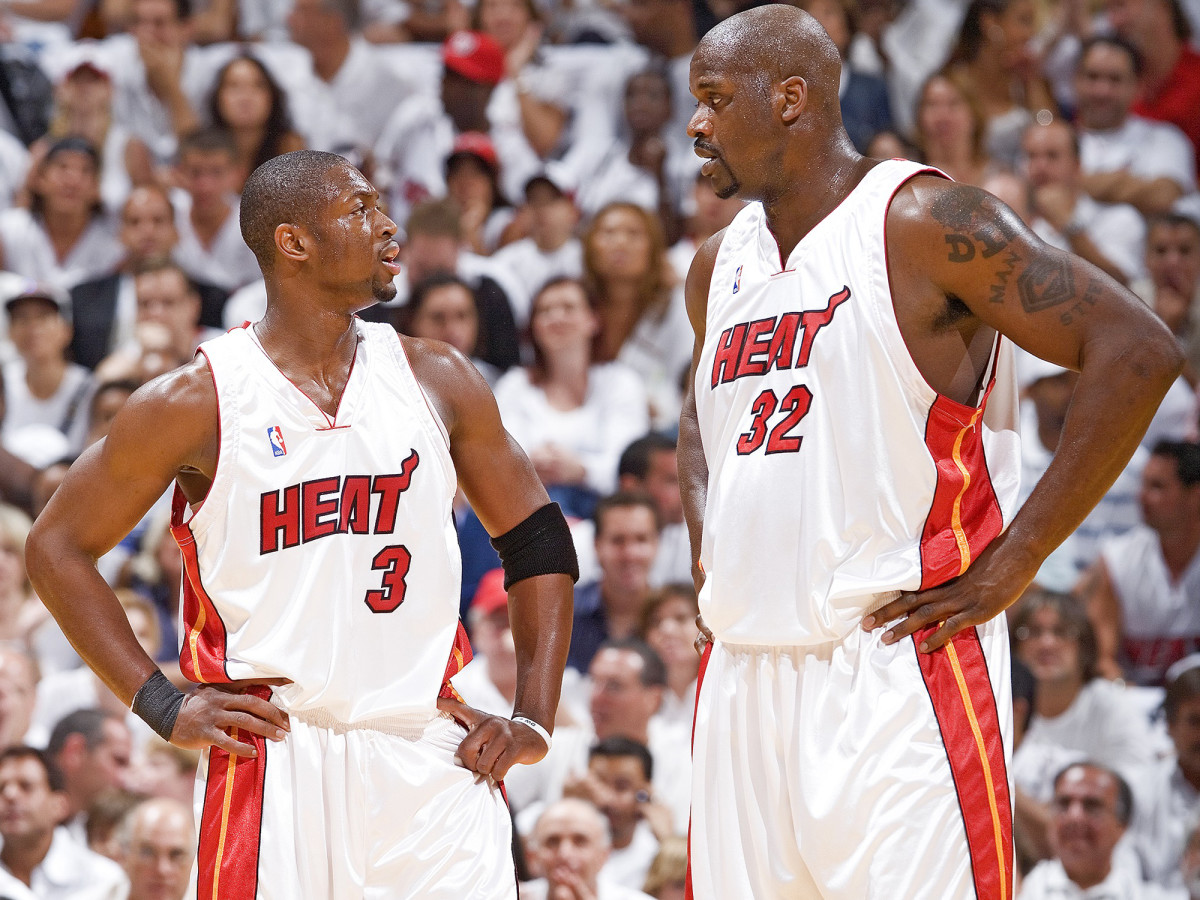
2006
It took just two years for O’Neal and his new running mate, Dwyane Wade, to guide the Heat to the 2006 Finals. Although Miami’s come-from-behind series win over Dallas was the subject of much controversy, thanks in part to outspoken Mavericks owner Mark Cuban, O’Neal claimed his fourth and final championship.
Unlike the first three, however, O’Neal took a backseat. At 34, he was in decline from his sensational career peak, averaging 18.4 PPG and 9.8 RPG during the playoff run. Importantly, though, he was able to strike the right balance with Wade, who at 24 was one of the league’s ascendant stars.
Miami Heat to retire Shaquille O’Neal’s No. 32 jersey
,” S.L. Price noted that his personality pairing with O’Neal was key to the Heat’s title run.
If anything had marked Wade’s growth as a player during his three years in the league, it was his diplomacy. Though he quickly established himself as Miami’s best player while a rookie, he made every accommodation for the aging Shaquille O’Neal that Bryant couldn’t make in L.A. Wade had no hang-up about its being Shaq’s ball, Shaq’s team.
“More than any young player I’ve been around, Dwyane has a very high level of maturity,” says [former coach Stan] Van Gundy, who was coaching the Heat when O’Neal was traded to Miami, before the 2004–05 season. “As much acclaim as [Wade] gets, he will not let his voice rise above Shaq’s and will let Shaq be the Man. That’s essential for that team: A lot of them know, quite honestly, that Dwyane is the better player at this point. But they need Shaq, and to keep him feeling good you have to keep Shaq in that preeminent position. Dwyane’s smart enough to understand that and mature enough to let it happen. He knows that he can get enough attention without getting into a battle with Shaq.”
After winning his fourth title, four years after the Lakers’ three-peat came to a close, O’Neal was predictably gleeful in guaranteeing a Heat repeat.
“We’re going to do it again next year. Yeah—I said it.”
2008
The back-to-back talk failed to materialize, as O’Neal aged and accumulated injuries. Miami ultimately decided to trade O’Neal to Phoenix in 2008, sending the one-time franchise center on a vagabond journey that would take him to three different teams over the next three-plus seasons.
McCallum wrote, shortly after the trade to the Suns, that O’Neal understood that the writing was on the wall.
“Even though I’ve been the most dominant player for a while,” Shaq said last week after a practice session, “there comes a time when you gotta be realistic. Nobody has ever dominated the league at 36, and I’m not gonna be the first. Everybody, when he gets older, has to sacrifice a part of his game and realize he’s lost part of his physical ability. I’m O.K. with that.”
Well, he was never O.K. with it before. Basketball obituaries about Shaq have been written for the last five years, and he has always scoffed at them, clinging to the notion that he sets the on-court agenda. No longer. “I’m 36, and Amare’s 25,” says Shaq. “It would be dumb of me to take 30 shots and turn him into a role player. Let Amare go off, and I’ll be the role player.”
So there it is: role player. His is a career writ large—in size, in deed and in his own telling—and Shaq’s acceptance of his hoops mortality is nothing less than astonishing.
2009
Like many aging stars before him, O’Neal turned his attention late in his career to burnishing his reputation. In 2009, he was dealt to the Cavaliers, where LeBron James was 24 and still pursuing his first title.
Ian Thomsen writes that James took his “role player” talk one step further upon his arrival.
Having won three rings as a Laker with Kobe Bryant and a fourth with Dwyane Wade in Miami, Shaq is making another stop in his Forrest Gump-like run through the NBA: He is moving to Cleveland to assist the King, LeBron James, in pursuit of his first crown.
“Everybody is going to say, Whose team is it?” said O’Neal, two days after the Cavaliers acquired him from the Suns for Ben Wallace, Sasha Pavlovic, a second-round pick and $500,000. “It’s his team. I want you to print that in double-black-bold print: It’s his team. He’s the King, and the Cavs have hired a known hit-man bodyguard. My job is to protect him. The team is his team, he’s the s---, and I’m his backup.”
O’Neal wasn’t just another “Has Been,” though, not by a long shot. His description of Michael Jackson upon the pop singer’s death was a reminder of just how famous O’Neal had been at his peak.
“I had a lot of history with him,” Shaq said. “Fifteen years I knew him. He used to stay in my house when he would come to Orlando, and nobody was there. We used to go to the Neverland ranch; my kids would go up there. His house was a real damn beauty—this guy had lions, tigers, bears, giraffes, cougars. When you went there, it was like you’d get to go to a carnival. He’d invite us to go and watch movies in the theater in his house. He was real generous with me, a really nice guy.”
O’Neal’s celebrity-soaked memories and decade-plus of experience couldn’t prevent Cleveland’s season from ending in the worst way possible. A shell of his former self at 38, O’Neal posted modest numbers in the postseason as the Cavaliers were eliminated by the Celtics, prompting James to bolt for the Heat that summer. O’Neal made his own decision—with a lowercase “d”—by joining the Celtics for one last hurrah.
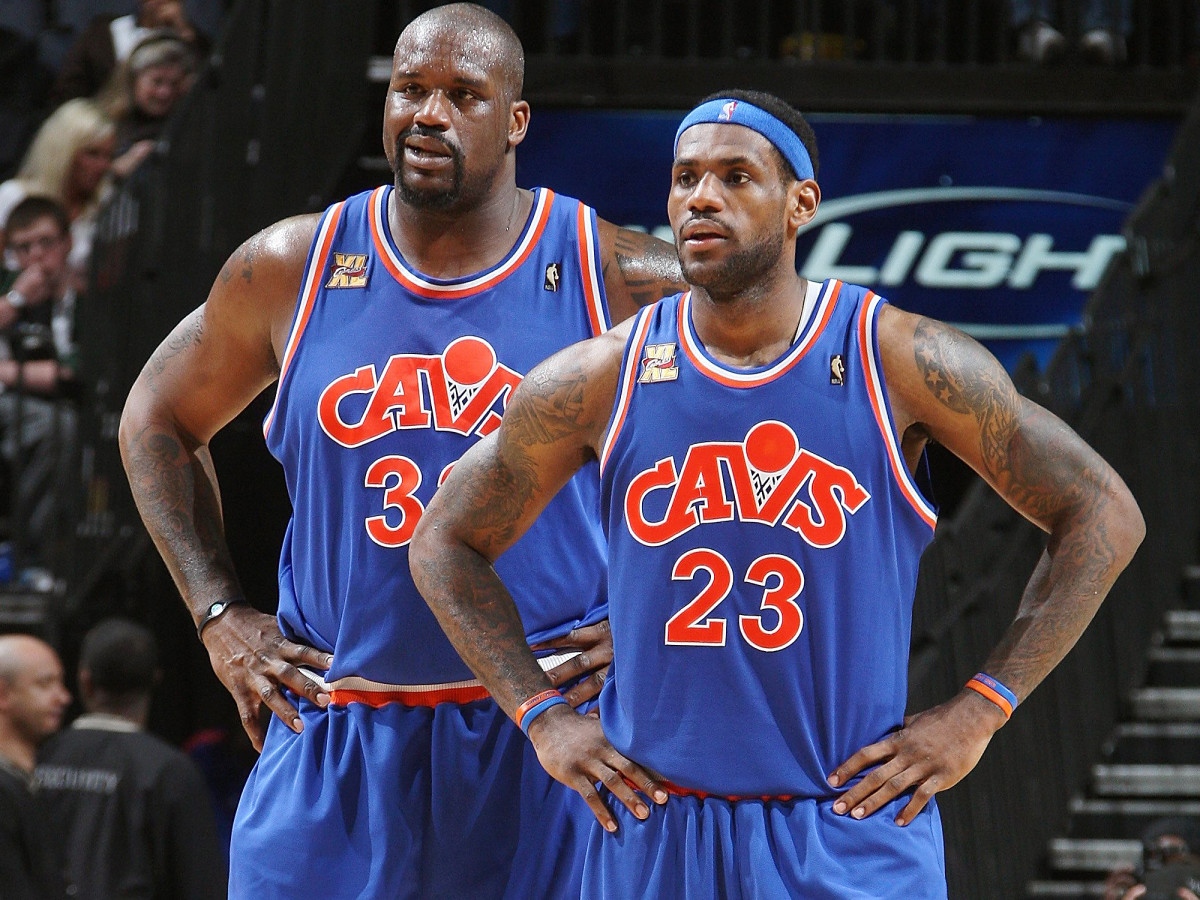
2011 and beyond
Multiple injuries kept O’Neal from being a postseason contributor during his one and only season in Boston, leading to his retirement announcement in June 2011.
In the five years since, O’Neal has shifted into a role as an analyst on TNT’s “Inside the NBA” program, trading quips with Charles Barkley and popularizing the “Shaqtin’ a fool” blooper segment. Never far from the news, O’Neal’s name has popped up in Sports Illustrated stories on everything from Jason Collins’s announcement that he is gay to an investigation into shady performance bracelets to Bryant’s reflections on the end of his career.
On the court, the NBA hasn’t been the same without him, as there hasn’t been a center in the last decade that’s come all that close to maintaining the gaudy numbers O’Neal posted throughout the first 10 seasons of his career. With all due respect to Dwight Howard, DeMarcus Cousins and Andre Drummond, there are no obvious “Next Shaq” candidates in the pipeline, especially as the current game trends toward versatility rather than low-post power. More importantly, though, it’s hard to imagine any player ever being able to capture everything that made O’Neal such an icon: his power and his charisma, his size and his drive, his feel and his verbosity, his joy and his salesmanship.
During O’Neal’s collegiate days, Abdul-Jabbar wisely urged fans to avoid comparisons, suggesting that the best course for this gigantic prodigy was to, “Let him be the first Shaquille.” As O’Neal heads to his rightful spot in Springfield as a first ballot Hall of Famer, it feels proper to complete Abdul-Jabbar’s circle.
The best course now is to remember that O’Neal was not only the first Shaquille, but the last Shaquille and the only Shaquille.
